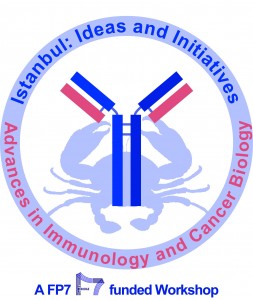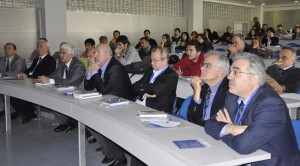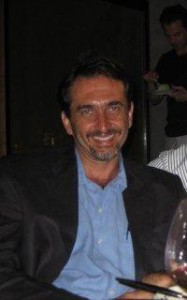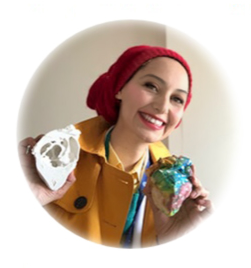Category: Engineering
UCCVS 2022 Focus Valve Scholarship
I am very proud to have participated in 18th International Congress of Update Cardiology & Cardiovascular #Surgery with two research presentations, and ✨ to be awarded with FocusValve Scholarship ✨
Best regards to #UCCVS committee members and our esteemed Prof. Öztekin Oto.
Engineering Solutions to Medical Problems
We met at the ‘Engineering Solutions to Medical Problems’ panel at Yıldız Technical University. Many thanks to ~Yıldız Technical University IEEE Engineering in Medicine and Biology Society~ for this well-planned organization.
EVBio
A team I am honored to be involved in EVBio!
EVBio is a digital think tank formed by scientists from all disciplines related to vascular medicine, from molecular biology to scientific computing. Our mission is to imagine the future through disruptive basic and translational research. Our team works tirelessly to formulate one universal coherent theory for vascular disease and support all global efforts towards its conception and validation.
Our membership will increase soon!
Clinical Engineer Hub
Our mission is to create a future generation of clinician engineers.
I am very happy to be in this team and to do great work with these amazing people.
The Clinician Engineer Hub was launched in 2019 in collaboration between clinicians and engineers at the Queen Elizabeth Hospital Birmingham, Imperial College London, and King’s College London.
This international hub brings together the clinical and biomedical engineering fields and provides talented medical students and clinicians exposure to the world of biomedical engineering, the challenges doctors face in diagnosing and treating patients, and how to potentially solve these issues with cutting-edge engineering solutions.
Cardiovascular Engineering in Istanbul
We talked about cardiovascular engineering and its future. I was honored to be a guest in Future Research Institute. Many thnaks to Coskun Dolanbay.
Bio Futurathon
We discussed how we can reach a ‘life without barriers’ in the future and evaluated the projects that the contestant groups developed during the event day within the context of hackathon. Congratulations to the winning teams.
For more details : BioFuturathon and Future Research Institute
Women in 3D Printing
I was the guest of Women in 3D Printing this week.
The full-page is on this page: https://womenin3dprinting.com/banu-kose/
Thanks to Nora Toure for all the great work she has done and for bringing us together.
Institute of Physics / Challenges in Cardiocascular Flow
A joint meeting showcasing current work addressing the complex challenges in cardiac flow modeling, particularly focusing on the work of early career researchers (source).
ISO 13485:2016 Medical Devices Quality management Systems Requirements Training
I would like to thank Kemal Tekin for two fruitful days on ISO 13485:2016 Medical Devices Quality management Systems Requirements Training in British Standarts Institution.
Liquid State Physics in Turkey
22. Liquid State Symposium (22. Sıvı Hal Senpozyumu) took place on 7th December 2018 in Piri Reis University.
It was very proud to be together with the physicist academics I knew and admired since my undergraduate years.
I find myself lucky to see the Prof. Zehra Akdeniz that I have always admired and exemplified. I could finally meet Prof. Nihat Berker who is not only a famous physicist but also an intellectual on comparative literature readings.
Thanks to Dr. Ozan Sarıyer and Dr. Gulsen Evingur for organizing this meeting.
Prof Pekkan presented biological flow researches of his lab, and I presented a sample case of a pediatric aortic blood flow comparison study which is done with the great help of Dr. Ece Salihoglu.
Optimizing your workflow in the Mimics Innovation Suite
The Mimics Innovation Suite (MIS) allows you to automate your workflows, potentially saving a lot of time, achieving more consistency, and reducing repetitive work and human error. That is an easy thing to say, but if you do not have much experience with scripting, we all know that it can be tough to get started. If you want to speed up your learning curve and get a head start, then this could be an interesting training for you.
Topics will include:
Basics of Optimizing your Workflow in Mimics 21 and 3-matic 13
How to write your first scripts
Introduction to Python
Hands-on training exercises for creating planning workflows (e.g. loading datasets, performing basic segmentation steps, landmarking, creating anatomical coordinate systems, designing custom implants)
Simscale Certification
Thanks to Anna Flessner and Milad Mafi for the certificate, excellent training documents and lectures. #Simscale
The workshop was including the simulations of
1- Hip Joint Prosthesis and comparison of different materials with displacements
2- Stent Design and Comparison of different materials and different balloon pressures
3- Comparison of different stenosis persentages in carotid artery samples by CFD
Vivitro Pulse Duplicator Training in Protomed Labs
It was really a great experience at Protomed Labs in Aix-Marseille University. I really enjoyed learning about hydrodynamic testing requirements, Vivitro Pulse Duplicator, its calibration, flow testing, heart valve testing, and at the same time practicing.
Thanks to Prof. Kerem Pekkan for suggesting this training for Ece Tutsak and me.
I would like to express my sincere thanks and gratitude to Karim Mouneimne and Vincent Garitey for all the kind care they took, regarding the training, sharing their expertise to us, the detail notes, all the answers whenever required etc. in Protomed Labs.
I hopefully will be able to implement it further into my field. This got me inspired and ready to go!
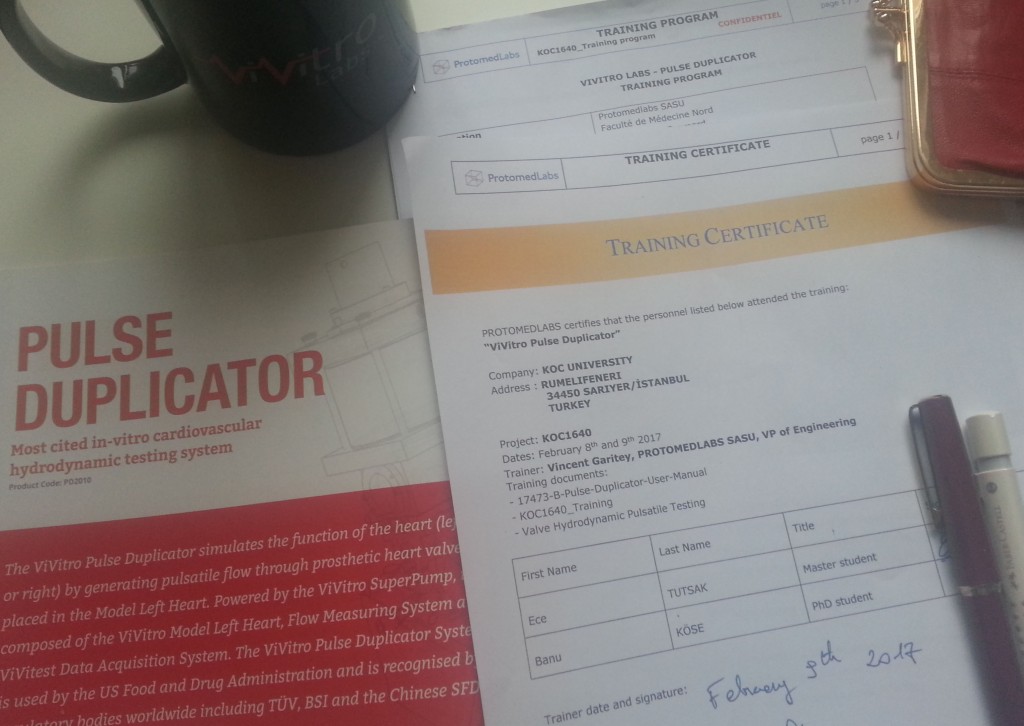 For More
For More
Advances in Cardiac Imaging
While cardiac magnetic resonance imaging (MRI) is considered an excellent imaging modality for the heart, offering highly detailed soft tissue anatomical imaging as well as functional assessments, it only makes up about 5 percent of all MRI scans in the United States. This is in part due to the expense, time involved and the complexity in completing these scans and reading them. There were two software innovations that may help increase the use of cardiac MRI by reducing its complexity.
To read the entire article, go to www.dicardiology.com/article/advances-cardiac-imaging-rsna-2016.
At RSNA 2015, Arterys introduced a package of advanced cardiac MRI visualization and quantification software that automates a lot of the processes involved. It also uses a cloud-based platform that allows access to a large amount of computing power needed to process cardiac cine functional data in real time. The software includes 4-D Flow and 2-D phase contrast workflows, and cardiac function measurements. The software is the first clinically available cardiovascular solution that delivers cloud-based, real-time processing of images with resolutions previously unattainable. The company gained U.S. Food and Drug Administration (FDA) 510(k) clearance in November 2016 and showed several new advancements at RSNA 2016. Arterys is partnering with GE Healthcare to introduce the software on the Signa MRI systems under the GE name of ViosWorks. However, Arterys said it has aspirations to be a software OEM for several MRI vendors. An additional introduction was Arterys? regurgitation evaluation software that offers several ways to view regurgitation, which has traditionally been difficult to assess on MRI. One view visualizes blood flow velocities with arrows to show direction of flow and a color code to show the speed of the flow. It presents very similar to cardiac ultrasound color flow Doppler. The software can help identify regurgitation jets, vortices and sheer wall stresses, and offers automated quantification. In cardiovascular research, sheer stress evaluation has become a big area of interest because it is believed these stresses may play a role in the formation of atherosclerosis, the degradation of heart valve function, and possibly play a role in the progression of heart failure. So, Arterys also introduced a research sheer stress analysis software package.
- DAVE FORNELL
To read the entire article, go to www.dicardiology.com/article/advances-cardiac-imaging-rsna-2016.
Laser Doppler Velocimetry
Laser Doppler velocimetry is used in hemodynamics research as a technique to partially quantify blood flow in human tissues such as skin. Within the clinical environment, the technology is often referred to as laser Doppler flowmetry (LDF). The beam from a low-power laser (usually a laser diode) penetrates the skin sufficiently to be scattered with a Doppler shift by the red blood cells and return to be concentrated on a detector. These measurements are useful to monitor the effect of exercise, drug treatments, environmental, or physical manipulations on targeted micro-sized vascular areas.
The laser Doppler vibrometer is being used in clinical otology for the measurement of tympanic membrane (eardrum), malleus (hammer), and prosthesis head displacement in response to sound inputs of 80- to 100-dB sound-pressure level. It also has potential use in the operating room to perform measurements of prosthesis and stapes (stirrup) displacement.
İTÜ
I could have a chance to give a seminar about my research field at Istanbul Technical University.
Thanks to the faculty in The School of Physics Engineering for their sociable audience and fruitful discussions.
Special thanks to Özgür Akarsu and Sevtap Yildiz Özbek for the generous invitation and their kind hospitality.
Windkessel plus colours ;)
I know why I’d rather CFD. Because it has colours. Windkessel analogy has not.
Simulate the Physiology & Understand the Pathology
.
Computational Life is a young company which has the specialty on computational flow simulations and mathematical models for the medical technology field.
The validated software Digital Avatar Platform (DAP) of Computational Life is modeling human and animal body mathematically. It is testing physiological scenarios for drugs, medical devices and treatment methods.
Circulation system, cerebrospinal fluids, transport of pharmaceutical products throughout the body can be simulated for the human and animal body with DAP. It can also be modified due to the experiment.
They replied to me with a very warm and energetic mood when I wrote them. It is great that there are enthusiastic people in the medical technology field. I am sure that I will hear more about the news of Computational Life in the next days.
Thanks to Christian Contarino, Davide Chieco and Carlo Rivis for their innovative platform which brings a great help for clinicians, researchers, and engineers.
Please check their website for more information.
.
ICPT – GEFIK 2016
I had chance to present my works to authors and answer the questions of young curious physicisits at GEFIK2016 in Ege University. Discussing about medical physics and classical mechanics with physicists was a peerless experience.
3D Printed Aorta
A pediatric aorta model reconstructed from the 3D CT images. 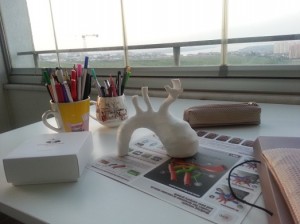
‘Go with the flow’ by Victoria Stoll
The British Heart Foundation (BHF) announced the winners of its annual ?Reflections of Research? image competition, reflecting the charity?s research into heart and circulatory disease.
The winning image ? titled ?Go with the flow,? by Victoria Stoll, a BHF-funded researcher at the University of Oxford ? captures the blood flowing within an adult heart frozen in time. Blood flows within the main pumping chambers (ventricles) of the heart and the vessels leaving the heart. The blue flow is blood that lacks oxygen and is travelling to the lungs. The red flow is blood that has been through the lungs and received oxygen and is now ready to be pumped around the body.
Stoll is using this type of imaging, four-dimensional cardiac magnetic resonance imaging (MRI), to look at the blood flow in four dimensions within the hearts of people with heart failure, whose hearts are not pumping effectively. She has already found that in people with severe heart failure the blood flows around the heart in a more disordered and disrupted pattern.
Mimics Innovation Course 2017 – Belgium
PRINT THYSELF
This sort of procedure is becoming more and more common among doctors and medical researchers. Almost every day, I receive an e-mail from my hospital?s press office describing how yet another colleague is using a 3-D printer to create an intricately realistic surgical model?of a particular patient?s mitral valve, or finger, or optic nerve?to practice on before the actual operation. Surgeons are implanting 3-D-printed stents, prosthetics, and replacement segments of human skull. The exponents of 3-D printing contend that the technology is making manufacturing more democratic; the things we are choosing to print are becoming ever more personal and intimate. This appears to be even more true in medicine: increasingly, what we are printing is ourselves.
Source: Newyorker
Trando Med
Trando Med will attend MEDICA 2017 in the Dusseldorf Germany from 13-16 November 2017. The booth is Hall 13 Booth F 9-05
Measure Your Blood Flow
The inventors of the new ?epidermal electronic? sensor system say it is ready for use in a clinical setting, specifically for monitoring skin health, for example in patients who have recently had skin grafts. They say down the road it may also be possible to use it inside the body. In a recent demonstration, the researchers showed that the device can record accurate data from human subjects about the flow of blood in larger vessels, specifically veins in the forearm, as well as in the network of tiny vessels near the surface of the skin.
Compared with state-of-the-art methods for noninvasively measuring blood flow, which rely on optical systems or ultrasound technology, the new sensor is much simpler and less expensive, says John Rogers, one of the inventors and a professor of materials science and engineering at the University of Illinois at Urbana-Champaign. More importantly, he says, it is much less sensitive to motion thanks to the way it ?intimately laminates? to the skin.
Characteristics of the blood flow in any given tissue are a good indicator of that tissue?s health. Some conditions, like infection and inflammation, can lead to an increase in local blood flow, whereas others, like atherosclerosis, heart failure, and diabetes, can cause a decrease. If doctors could precisely and even continuously monitor this flow, they could better tailor care to individual patients and conditions.
The Impacts of Cardiac MRI on Congenital Surgical Results
On October 19 Koc University presented “The Impacts of Cardiac MRI on Congenital Heart Surgical Results,” a public symposium at Koc University Hospital Artlab Conference Hall that explored the benefits of cardiac MRI scans for depicting the congenital heart anatomy.
The symposium began with a presentation by Prof. Afksendiyos Kalangos. He was followed by renowned pediatric cardiovascular surgeons and cardiologists Prof. Atıf Akçevin, Prof. Alpay Çeliker, Prof. Aphrodite Tzifa, A. Professor Tijen Alkan- Bozkaya and the radiologists Dr. Serhat Aygün, A. Professor Özdil Başkan who presented their own experiences, demonstrating a vast range of approaches to defining the context.
Prof. Kerem Pekkan presented his studies with MRI imaging and cardiovascular mechanics in the cases of blood flow dynamics, biomaterial tests, patient-specific vascular materials and surgical planning for congenital heart diseases. His signified projects were one of the fascinating parts of the symposium for participants.
Hemodyn
Hemodyn, the first cardiovascular mechanics and surgical planning company of Turkey is taking place in StartUp Istanbul 2015.
Hemodyn is assisting the surgeons in the diagnosis and surgery planning of the congenital heart diseases in The Incubation Office of Koc University.
Hemodyn Team has always been an invariable place for my research vision. I want to thank to Kerem Pekkan, Şenol Pişkin and Volkan Tuncay by means of this event.
IFG26 – Statistical Physics Days
26th Statistical Physics Days were held in İzmir Institute of Technology.
During the program organization, Prof. Nejat Bulut’s dedication and careful attention to every detail was so amazing that it will be a very nice experience in my mind.
It was an honor to be among the successful physicist academicians and to listen to their work. It was also my chance that I had the opportunity to talk about my own practice and find the opportunity to discuss it with very precious professors.
3D Printing for Pediatric Cardiothoracic Surgeons
‘Having worked in product development for the past few years, Dr. Enrique Garcia had seen what 3D printers were capable of and began investigating the possibilities for creating models for pediatric cardiologists to use before an operation. She began by asking surgeons from around the country what they thought of the idea. To say that their response was overwhelmingly positive is an understatement. The value of this idea was immediately apparent.’
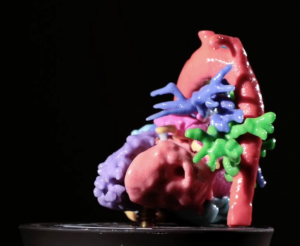
‘Pediatric heart surgery is the hardest thing that I can imagine a person doing. A surgeon doesn’t know what he’s going to see until he opens a child?s chest. Every heart is different and every cardiopathy is different,? said Garcia. ?A baby?s heart is the size of a walnut, and surgeons need to go in and move around structures that are as small and thin as a human hair, and they’re doing it with their own two hands. And all of this is occurring against a ticking clock.’
‘Having something in your hands, and being able to turn it any way you want, and to be able to cut and open it up and see the inside; and to be able to physically hold it, to feel it, is something that can?t be replicated on a computer.’
Read More in the source.
Computing in Cardiology
The 2015 Computing in Cardiology Conference will be held in the Nice, France, the heart of the French
Riviera, from September 6-9. The meeting is affiliated with the University of Nice-Sophia Antipolis and
CNRS.
Here is the scientific program: http://www.cinc2015.org/sites/default/files/fichiers/2015CinCProgramDetails-2.pdf
Click here for final manuscript submissions.
2015 North American Society for Cardiovascular Imaging (NASCI) Conference
The North American Society for Cardiovascular Imaging (NASCI) welcomes the submission of original abstracts for its 43rd Annual Meeting, September 26 ? September 29, 2015 at the Westin, San Diego via its online system. The NASCI 2015 Annual Meeting will showcase Oral Presentations, AHA Young Investigator Presentations (AHA Oral), and Educational Exhibits (Poster).
Scientific presentations are completed hypothesis-driven research with a comprehensive report; a work-in-progress report of ongoing research of emerging ideas and techniques and containing initial yet defined results; or a brief pertinent report of a particular new aspect or understanding of clinical radiology.
Young Investigator
The American Heart Association Council on Cardiovascular Radiology and Intervention (CVRI) will again sponsor the NASCI-AHA Young Investigator Awards.
Eligibility: All residents, postdoctoral students, medical students, and fellows are eligible.
Selection: Eight finalists will be selected and asked to orally present their papers at the Scientific Sessions. ONLY FIRST AUTHORS MAY PRESENT FOR YOUNG INVESTIGATOR SESSIONS.
Awards: All eight finalists receive two nights’ hotel accommodations at the Westin and will have the abstract published in full in the iJCVI. Travel and meeting registration costs are covered by the finalist. The three top presentations will receive an additional cash award. The 1st place presentation will receive an invitation to publish their work in the iJCVI with an expedited review by the Senior Associate Editor (although standard peer-review criteria for acceptance will apply). If accepted, this article will be noted as NASCI’s 1st place article in an Editorial written by the Senior Associate Editor.
NOTE: Those who submit as an AHA, but are not chosen as a finalist, will still be eligible to present their work as a non-AHA talk or poster.
Application details:
The presenter must be the first author of an accepted abstract.
Only Young Investigator submissions accepted for oral presentation will be considered for the American Heart Association – CVRI Young Investigator Awards.
The applicant must be a member of NASCI and CVRI.
A signed confirmation from the Program Director of the applicant?s In-Training status should be sent to the Society (FAX: 703-716-4487 or EMAIL: info@nasci.org) The applicant must apply before the MAY 19, 2015, 11:59 pm abstract deadline.
No more than two applicants from the same institution may be selected as a Young Investigator finalist. There is no limit to the number that may apply.
When submitting the abstract, please select “Yes” for the Young Investigator Awards/Travel Stipends Question.
The American Heart Association requires all applicants be an AHA CVRI (Cardiovascular Radiology and Intervention) Council member. If the applicant is not currently a member of the CVRI council, the CVRI Council will then pay the membership fee.
Voksel 3D Surgical Planning with Simpleware -İstanbul
We depicted a live- surgical planning scenario with Prof. Erbil Oğuz and Kerem Girgin in Voksel 3D event. We used Simpleware for image processing, segmentation and designing.
8th Istanbul Symposium: Pediatric Cardiac Surgery in Turkey, Developing CPB & ECLS Systems and Suggestions for Decreasing Complications
The 8th Istanbul Symposium will be held at Medipol University Mega Hospital.
10 January 2015, Saturday, 9:00-18:00
Symposium Comittee:
Prof. Dr. Atıf Akçevin, Yrd. Doç. Dr. Tijen Alkan-Bozkaya, Prof. Dr. Halil Türkoğlu, Prof. Dr. Akif Ündar
Click here for attending and the booklet.
Many thanks to Mehmet Hikmet Üçışık for his kind apprising.
Velocity Contours in Iso-Surfaces for The Re-Stenosed Pulmonary Artery
The entrance lenght parts of the inlet and outlet sections are only used for calculation process.
Carol Malnati
“- I wanted to be someone that encouraged young women to get involved in math, science, and engineering.”
Today, she’s doing just that.
As a product development engineer in the Medtronic cardiovascular division, Carol has been doing what she loves for more than 25 years. She provided critical technical expertise for the company’s first implantable cardioverter defibrillator and continues to collaborate with engineering teams and physicians to find new ways of doing things.
But on top of her day job, she has taken on another commitment – overseeing the Women in Science and Engineering (WISE) Initiative at the company.
Beginning in the spring of 2017, Medtronic introduced another opportunity that taps into an often overlooked talent pool. Careers 2.0 is a “returnship” program designed to provide paid internships for female engineers looking to get back into STEM-related careers. Research suggests close to 25 percent of women in engineering careers leave the industry by age 30, citing work culture or family commitments.
“This is a way to bring these talented women back into our technical and managerial ranks,” says Carol. “We are very excited about providing this amazing pool of talent an opportunity at Medtronic.”
“Overall, I want to inspire women,” says Carol. “Whatever your passion is; clean air, fighting hunger, or improving healthcare. Behind the biggest challenges of humanity, there’s an engineer working to find a solution.”
The special session for the women in the field of cardiovascular surgery – The 64th Istanbul ESCVS
International Congress of the European Society for Cardiovascular and Endovascular Surgery (ESCVS) will be held on March 26th – 29th, 2015 in İstanbul in collaboration with International Congress of Update Cardiology and Cardiovascular Surgery.
The congress scientific program includes a session for women in cardiovascular surgery which will be held on March 28th.
Abstract Submission Deadline
December 22, 2014
…………………………………………..
Notification of Abstract Acceptance
January 2, 2015
…………………………………………..
Early Registration
until November 7, 2014
Starfish Medical – VivitroLabs – ProtomedLabs – Marseille – France
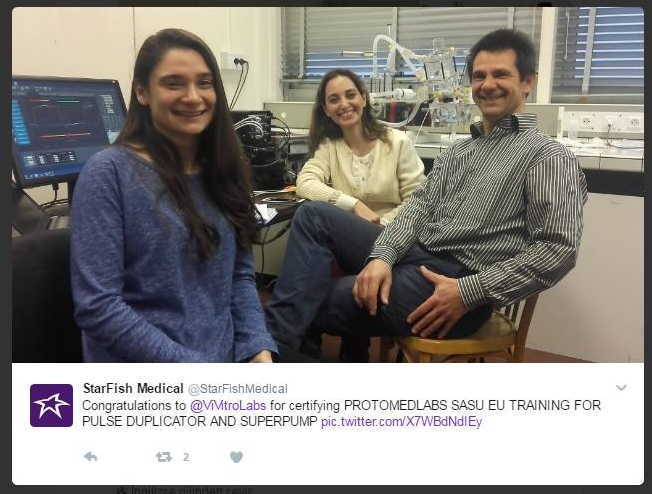
Ece Tutsak (Left) – Banu Köse(Middle) – Vincent Garitey(Right)
Heart Flow
Using data from a standard CT scan, the non-invasive HeartFlow Analysis creates a personalized 3D model of the coronary arteries and analyzes the impact that blockages have on blood flow. See the website: http://www.heartflow.com/
The Horizon for Mechanical Circulatory Support
Filmed at the 2014 STS Annual Meeting in Orlando, Florida, this roundtable discussion focuses on mechanical circulatory support. John Kern moderates the discussion with Pavan Atluri and Francis Pagani. The panelists discuss mechanical circulatory support, LVAD therapy, and heart transplantation. The discussion concludes with thoughts on the future of mechanical circulatory support.
Source: CTS
2014 AATS Cardiovascular Valve Symposium in İSTANBUL
The inaugural 2014 AATS Cardiovascular Valve Symposium will bring international leaders in adult, congenital, and adult-congenital heart valve disease as well as diseases of the ascending aorta together for three days to discuss the latest information regarding management guidelines, imaging, pathology, minimally invasive approaches, percutaneous approaches, surgical techniques, devices, and long term results. Faculty presentations of the latest available data, techniques, and state of the art reviews will be supplemented by comprehensive surgical video sessions. In addition, the program will include abstract presentations selected by the program committee from submitted original work on a wide range of topics. This innovative program will allow attendees at all levels to advance their knowledge in aortic and ascending aorta, mitral, pulmonary, and tricuspid valve disease across all age spectrums during this AATS Symposium in Istanbul.
Click here for details.
PROGRAM DIRECTORS
|
Wilhelmina Children’s Hospital / Utrecht Sessions – The Netherlands
3 daags kindercardiologie TGA symposium
Beykent University Biomedical Engineering Event
I would like to thank the students of the biomedical department of Beykent University for inviting me to their event. It was nice to meet the curious and excited students.
VOKSEL 3D Event in Istanbul
‘Voksel’s Anatomical Modeling, Surgical Planning, 3D Printing with Engineer – Surgeon Collaboration Training‘ was held on 23rd February in Istanbul.
I had the chance to share my experiences in image processing and modeling with the participants. I would like to thank Kerem Girgin, Erbil Oğuz, Samet Serbest and Cansu Çeltik from Voksel. It was great to be a part of Voksel team, and meeting with the participants who were aware of the benefits of interdisciplinary collaborations and patient-specific planning very well.
3D Bio-Printing Project of Sabancı University
For the first time in the world, tissue structures were created by using self-supported live cells in a 3D bio-printer from medical images in the 3D Tissue and Organ Printing Project.
Sabancı University Faculty of Engineering and Natural Sciences? Manufacturing Systems Program professor Bahattin Koç and his stedents; Can Küçükgül, Saime Burçe Özler, Forough Hafezi printed artificial tissue construct at the Nanotechnology Research and Application Center (SUNUM) using self-supported live cells in a 3D bio-printing system.
The 3D Tissue and Organ Printing Project team used live human dermal fibroblast cells as bio-ink to print a part of aortic tissue. Human blood vessel tissue consists of mainly three types of cells: fibroblast, endothelial and smooth muscle. Fibroblast cells are the main cells of connective tissues. They synthesize the extracellular matrix and collagen protein needed for tissues. Endothelium is the thin inner layer of cells of blood vessels. Smooth muscle cells are found in inner organs such as blood vessels, esophagus and intestines. The scientists continue their efforts to maturate the blood vessel tissue created by fibroblasts as well as endothelial and smooth muscle cells in a bioreactor.
3D Modeling to Display Complex Congenital Heart Diseases
Thanks to Emre ^.^
17th U.S. National Congress on Theoretical & Applied Mechanics
Every four years since 1950 the leading mechanics researchers have convened the U.S. National Congress on Theoretical and Applied Mechanics. All mechanics researchers and students are invited for the 17th Congress on the beautiful Big Ten campus at Michigan State University. The sessions will be held at the Kellogg Hotel and Conference Center on Michigan State University’s campus.
Many thanks to Seungik Baek for his kind invite us Cardiovascuar Mechanics Minisymposia:
The goal of this minisymposium is to provide the state of the art in theoretical and computational methods applied to the cardiovascular mechanics including computational and constitutive modeling, theoretical vascular mechanics analysis, and cardiovascular design technologies. Topics may include, but are not limited to cardiovascular fluid and/or solid mechanics, cardiovascular diseases and treatment, optimization techniques. We believe that you would be an excellent contributor to this session based on your many exceptional works in the fields of theoretical and computational mechanics to cardiovascular problems.
The 14th Annual International Symposium on Congenital Heart Disease
The 14th Annual International Symposium on Congenital Heart Disease will feature a world-class faculty of domestic and international experts in Cardiology, Cardiac Critical Care, Cardiac Surgery, Nursing, Hospital Administration, and Ethics. This year the conference will focus on Diseases of the Cardiac Valves from the Fetus to the Adult. The program will include didactic, case-based, and interactive presentations as well as pathologic heart specimens and practical workshops. Special tracks dedicated to cardiovascular nursing and hospital administration will be included making this a truly team-based symposium.
Click for the Symposium Web Page.
Click for Symposium Document.
The World Congress of Biomechanics (WCB) 2014
Registration and abstract submission are now open for The World Congress of Biomechanics (WCB) 2014. The World Congress is the most comprehensive global meeting on all topics related to biomechanics and is held once every four years. The next meeting will be in Boston, Massachusettson July 6-11, 2014.
Submission Timeline
- November 15, 2013 ? January 15, 2014. Due to limited podium presentation slots, early submission recommended.
- Student Paper Competition sponsored by ASME Bioengineering Division; requires abstract submission by currently enrolled students at the BS, MS, and PhD levels
Submissions for podium and poster presentations include any area of biomechanics and related areas, including bioheat transfer, biomaterials, ergonomics, medical devices, new testing devices and technologies, and tissue engineering. In particular, biomechanical studies ranging from the molecular level (e.g., DNA mechanics and mechanotransduction) to whole organisms (e.g., from animal flight to human sports biomechanics) are welcome.
Abstracts should be submitted on-line at http://wcb2014.com/event-info/call-for-papers/ and will be reviewed on a continuous basis. Early submission is encouraged! Note that WCB2014 follows a US holiday weekend (July 4, Independence Day) that may affect your travel plans.
Wall Shear Stress
Pediatric re-stenosed pulmonary artery model is depicted with marked points of unstable wall shear stress (WSS) which brings about the thinner layers by platelets. This means the loss of smooth muscle cells and remodeling risk. Sudden bends and tapering in the geometry induces high velocity gradients and high wall shear stress.
XIX. International Biomedical Science and Technologies Symposium (BİOMED 2013)
XIX. International Biomedical Science and Technologies Symposium (Biomed) took place in Kuşadası, İzmir.
I had chance too meet Kamuran Kadıpaşaoğlu and Khoshrow Mottaghy in Artificial Organs Session.
When I was back to İstanbul I was pleased about the causerie with Kamuran Kadıpaşaoğlu and his students Emir Gökberk Eken and Saygun Güler. Many thanks Saygun for supporting me kindly to Adnan Menderes Airport.
Surgical Planning and 3D Printed Hearts
Alistair Phillips, MD, who is the Co-Chair for the American College of Cardiology, Surgeons Section tells about some of the impacts he has personally experienced using 3D printing in surgical settings as his participation in the 3DHEART program:
“The clinical trial is particularly exciting as it targets specific cases in which understanding of the anatomy will greatly enhance the surgical approach. A 3D printed replica of a patient’s heart will be created as part of the inclusion criteria to be in the study.Using 3D printing gave a better understanding of the Hybrid procedure, and allowed us to perform pulmonary valve replacement with a minimally invasive approach avoiding conventional method that required open-heart surgery. After coming to Cedars-Sinai we refined the pre-ventricular approach by utilizing a 3D printed models of patients’ hearts. We were able to simulate the implant into the right ventricular outflow tract.
Every surgeon is different. The education, experience, aptitudes, and attitude we bring to each equally nuanced and varied patient span an almost limitless spectrum and inform how we may utilize 3D printing for the benefit of our patients. The elegance of 3D printing is that it can create the individualized tools spanning this spectrum.
That said, however, what is not negotiable is the veracity of the models that we are receiving. Various materials and their corresponding colouring or rigidity may serve different functions in the hands of different surgeons, but ultimately we must have the utmost confidence in the fidelity of the models we are utilizing for pre-surgical planning. The more realistic the model is both in anatomical and textural preciousness will greatly enhance the application.
In all honesty, I would advise each hospital to start by really understanding the value proposition 3D printing offers across all specialities and, the culture of their institution. The best way to get answers to these very nebulous, complicated, nuanced directives is by retaining an outside vendor to provide as much of the services as possible, from the proverbial soup to nuts.
The excitement around the 3DHEART clinical trial is so great because it is the first organized, large-scale attempt to collect evidence of the efficacies of 3D printing in the practice of medicine and delivery of healthcare, not only in terms of optimized patient outcomes but also with respect to lower costs. If we can get reimbursement for 3D models, it is without a doubt a game-changer in terms of the practice of medicine, and a life-changer for many of our patients.”
Flow Testing Dynamic Systems with 3D Printed Patient-Specific Heart Models
“Without the 3D printed models, we wouldn’t have been able to come up with a way to do the procedure in advance.”
—C. HUIE LIN, M.D
Adult congenital and interventional cardiologist.
3D Print Bureau of Texas has partnered with physicians at Houston Methodist Hospital to create cardiac models for applications such as assessing the size and attachment site of a right atrial malignancy. Accurate physical replications of patient anatomy can even undergo testing in a dynamic system such as replicating the severity of aortic stenosis using flow testing.
3D Print Bureau of Texas also worked with Houston Methodist DeBakey Heart and Vascular Center on a complex case involving a young patient born with a wide-open leaking pulmonary valve. The patient could not take blood transfusions and have been turned down by two medical centres concerned she would not make it through surgery.
With a 3D printed model of the patient’s heart, Lin devised a plan that required very little blood loss, which resulted in a successful operation for the little patient.
10th Pediatric Mechanical Circulatory Support Systems & Pediatric Cardiopulmonary Perfusion Conference
The 10th International Conference on Pediatric Mechanical Circulatory Support Systems & Pediatric Cardiopulmonary Perfusion will be held at the Hall of Flags, University of Pennsylvania, Philadelphia, PA, USA, May 28-31, 2014.
Preliminary scientific program is attached for your review.
All abstracts must be submitted online via the conference web site. http://pennstatehershey.org/web/pedscpb/home
Please use the same link for conference registration, hotel room and exhibitor registration.
The scientific program of the 10th event has special additional features such as Pediatric CPB-ECLS-MCS Wet-labs, Simulations, Hospital Tours & Case presentations for all pre-registered participants.
Important Dates (2013-2014)
DATE EVENTS
December 16, 2013 Conference & Hotel Registration Begins
December 16, 2013 Abstract Submission Begins ? Online Only
March 1, 2014 Exhibitor Booth Registration Deadline
March 1, 2014 Final Day for Abstract Submissions
March 7, 2014 Notification of Accepted Abstracts
April 1, 2014 Early Registration Ends
April 18, 2014 Final Day for Manuscript Submissions Being Considered for Conference Awards
April 1-27, 2014 Late Registration
May 28-31, 2014 On-site Registration (Only if Space is Available)
NAFEMS European Conference on Multiphysics Simulation 2018
11th & 12th October 2018
Budapest, Hungary
Technology is changing faster than ever. Global megatrends – such as digitalization, resource scarcity, and the need for renewable energy – drive the demand for innovation and efficient product development. In today’s world of almost limitless computing power, numerical simulations need to be both accessible and accurate in order to enable innovation.
NAFEMS are pleased to announce the fourth European Conference on Multiphysics simulations in October 2018. It will cover the use of Multiphysics simulations in industry.
Functional blood vessels regenerated in vivo from human induced pluripotent stem cells
Vasculogenesis ? the process of blood vessel formation through a de novo production of endothelial cells (ECs, or those forming a thin layer lining the interior surface of blood and lymphatic vessels) ? is a vital tool in regenerative medicine, tissue engineering, and, in particular, the battle against vascular disease, the leading cause of mortality in the United States. (More than one in three Americans (36.9%) suffer from heart disease, and by 2030, an estimated 116 million people in the United States (40.5%) will have some form of cardiovascular disease.) More specifically, generating functional, long-lasting vasculogenic cells is a key but elusive component in human induced pluripotent stem (hiPS) research. Recently, however, researchers at Harvard University and Massachusetts General Hospital successfully generated endothelial cells from healthy donors’ hiPS cells to form stable functional blood vessels in vivo. Moreover, they developed an approach to generate mesenchymal precursor cells (MPCs, or multipotent stromal, or connective tissue, cells that can differentiate into a variety of cell types including perivascular cells ? another component of vessel wall) from hiPS cells in parallel, and also generated functional blood vessels in vivo using these endothelial and multipotent stromal derived cells from the same hiPS cell line. Beyond this, and in terms of clinical translation, the team successfully generated ECs and MPCs from Type 1 Diabetic patient-derived hiPS cell lines and also used them to generate blood vessels in vivo.
5th ISTANBUL SYMPOSIUM: BIOENGINEERING APPROACHES ON PEDIATRIC CARDIOVASCULAR MEDICINE
Scientific Co-Chairs are Kerem Pekkan, PhD & Akif Ündar, PhD
The 5th Istanbul Symposium is intended for medical and engineering students, nurses,
scientists, pediatric heart surgeons, engineers, cardiologists, intensivists, neonatologists,
anesthesiologists, neurologists, pediatric perfusionists, respiratory therapists, residents
and fellows. All are invited and encouraged to attend.
Koç University, Engineering Auditorium ( Mühendislik Oditoryumu ) / 19 April 2013
European Society of Cardiology Congress 2013 / Amsterdam
 The new translational initiative ‘Science in Practice’ will provide clinicians with insights on where the field is going in the future and basic scientists with a critically important context for future work.
The new translational initiative ‘Science in Practice’ will provide clinicians with insights on where the field is going in the future and basic scientists with a critically important context for future work.- General practitioners, nurses and other allied professionals: reduced fee to participate in the general cardiology update programme on Saturday 31 August as an introduction to the ESC Congress 2013.
 For the first time delegates will be able to follow the ?Guidelines into Practice (GIP)? track , designed to support cardiologists in the implementation of the Guidelines in their daily practice.
For the first time delegates will be able to follow the ?Guidelines into Practice (GIP)? track , designed to support cardiologists in the implementation of the Guidelines in their daily practice.
Click for Congress Home Page
International Conference on Integrated Medical Imaging in Cardiovascular Diseases / Vienna
The International Atomic Energy Agency (IAEA) announces its intention to hold the International Conference on Integrated Medical Imaging in Cardiovascular Diseases (IMIC2013). Cardiovascular diseases (CVDs) are an important sub-group of non-communicable diseases and are one of the main priorities in the health care systems of many IAEA Member States. Medical imaging, including molecular nuclear medicine, is extremely important in that it offers strategic advantages in both diagnostic and therapeutic decision making. It provides inputs for diagnosis, staging, treatment, prognosis and follow-up in the management of CVDs. Medical imaging includes techniques such as single photon emission computed tomography (SPECT), positron emission tomography (PET), echocardiography, computed tomography (CT), and magnetic resonance imaging (MRI). These techniques provide an excellent opportunity to understand the pathology of individual patients and can therefore serve to facilitate tailored clinical management. Each imaging modality has its advantages and limitations which need to be understood properly by health care professionals dealing with CVDs. Many Member States are actively using, have recently implemented or are planning to acquire these technologies.
International Congress of Cardiovascular Technologies /Algarve
1 . Cardiovascular Imaging and Cardiography
2 . Computing and Telecommunications in Cardiology
3 . Surgical Technologies and Advanced Robotics
Extended Abstract Submission and Complete Paper Submission: April 24, 2013
Authors Notification: June 17, 2013
Camera Ready and Registration: July 8, 2013
International Symposium on Endovascular Therapeutics / Barcelona
International Symposium on Endovascular Therapeutics is a scientific event created in Barcelona in 2000. Its main objective is to update Endovascular professionals on the most relevant innovations interacting with international and multispecialty faculty. The meeting is held biyearly in Barcelona.
|
||||||||||||||||||||||||||||||||||||||||||
| The most important features of this event are: ? Hands on opportunities ? Abstracts and challenging case competition presentations ? Vascular, cardiac and neurovascular topics ? Hot, cutting edge discussion topics |
||||||||||||||||||||||||||||||||||||||||||
Wireless device powers implanted blood-pressure sensor, eliminating batteries
Researchers at A*STAR Institute of Microelectronics in Singapore are developing a prototype wireless device that powers an implanted blood-pressure sensor, eliminating the need to recharge or replace a battery.
The microscale electronic sensor monitors blood flow through artificial blood vessels. Surgeons use these prosthetic grafts to bypass diseased or clogged blood vessels in patients experiencing restricted blood supply, for example.
Over time, however, the graft can also become blocked. To avoid complete failure, blood flow through the graft must be monitored regularly, but existing techniques are slow and costly.
Monitoring blood flow rate inside prosthetic vascular grafts enables early detection of graft degradation and prevention of graft failure.
The implant is powered by a handheld external reader, which uses inductive coupling to wirelessly transfer energy. The team developed an ultralow-power application-specific integrated circuit (ASIC) for the implant designed for low-power (21.6 ?W) use.
The sensors are based on piezoresistive silicon nanowires. As blood flows over the sensor, the associated mechanical stresses induce a measurable increase in electrical resistance, proportional to the flow pressure.
?Our flow sensor system achieves an ultra-low power consumption of 12.6 microwatts,? said A*STAR?s Jia Hao Cheong, who heads the project. To achieve that the sensor transmits its data to the handheld reader passively, by backscattering some of the incoming energy. ?We have tested our system with 50-millimeter-thick tissue between the external coil and implantable coil, and it successfully extracted the pressure data from the implantable device.?
?The next step of the project is to integrate the system and embed it inside a graft for an experimental animal,? Cheong said.
Source: http://www.kurzweilai.net
Infant brain controls blood flow differently
?The control of blood flow in the brain is very important,? says Elizabeth Hillman, associate professor of biomedical engineering and of radiology, who led the research study in her Laboratory for Functional Optical Imaging at Columbia University.
?Not only are regionally specific increases in blood flow necessary for normal brain function, but these blood-flow increases form the basis of signals measured in fMRI, a critical imaging tool used widely in adults and children to assess brain function,? says Hillman. ?Many prior fMRI studies have overlooked the possibility that the infant brain controls blood flow differently.?
Functional magnetic resonance imaging, or fMRI, is one of several brain-imaging methods that measure changes in blood flow to detect the presence and location of neuronal activity. In adults, blood-flow increases occur in specific regions of the brain during a particular task like moving your hand or reacting to a stimulus.
?We found that the immature brain does not generate localized blood-flow increases in response to stimuli,? says Mariel Kozberg, a neurobiology MD-PhD candidate and lead author of the paper published in the Proceedings of the National Academy of Sciences. ?By tracking changes in blood-flow control with increasing age, we observed the brain gradually developing its ability to increase local blood flow and, by adulthood, generate a large blood-flow response.?
Hillman says the findings suggest that vascular development may be an important new factor to consider in normal and abnormal brain development.
The team used a unique high-speed, high-resolution imaging approach that takes advantage of the different absorption spectra of deoxygenated and oxygenated hemoglobin in order to determine changes in the concentrations of each.
The researchers found that, with increasing age, there was a gradual development of a localized increase in blood flow, while a strong, delayed decrease in flow was consistently present. Only by adulthood was the positive increase able to balance the decrease in flow.
?Our results suggest that the infant brain might not be able to generate localized blood-flow increases, even if there is neuronal activity occurring, and that the development of blood-flow control occurs in parallel with early neuronal development,? says Kozberg.
?This could suggest that fMRI studies of infants and children may be detecting changes in both vascular and neuronal development?in fact, vascular development may be an important new factor to consider in normal and abnormal brain development.?
The team also found that the younger age groups were highly sensitive to blood pressure increases in response to stimulation and that these increases can cause large increases in blood flow across the brain.
?This finding indicates that the newborn brain is also unable to regulate its overall blood-flow levels,? Kozberg explains. ?This could explain earlier fMRI results in infants and children that were sometimes positive and sometimes negative, because it is difficult to tell whether blood pressure increases are occurring in infants and children. This result suggests that great care should be taken in setting stimulus thresholds in young subjects.?
The researchers add that, since the newborn brain appears to be able to sustain itself without tightly controlled blood flow, their findings suggest that the infant brain may be intrinsically more resistant to damage due to a lack of oxygen than the adult brain.
?This could be an important property to understand, both in terms of understanding how best to treat blood-flow problems in the newborn infant brain, which can cause lifelong problems such as cerebral palsy, and to potentially better understand how to treat the adult brain in conditions such as stroke,? Hillman observes.
This research was supported by grants and student fellowships from the National Institute of Neurological Disorders and Stroke, the National Eye Institute, the National Science Foundation, the National Defense Science and Engineering Graduate Fellowship, the Medical Scientist Training Program, and the Human Frontier Science Program.
Researchers show how blood vessels regroup after stroke
Growth factors released by oxygen-starved cells prompt nearby endothelial cells, which line blood vessels, to grow into new networks. Researchers at Rice University are working to understand how to direct the process in the brains of stroke and disease patients. Credit: Qutub Lab/Rice University Rice scientists simulate “robot” cells to study the development of microvascular systems in the brain. The goal is to find a way to direct the development of vessels that feed oxygen-starved cells in stroke and neurodegenerative disease patients.
Read more at: http://medicalxpress.com/news/2013-02-blood-vessels-regroup.html#jCp
5th ISTANBUL SYMPOSIUM: BIOENGINEERING APPROACHES ON PEDIATRIC CARDIOVASCULAR MEDICINE
5th ISTANBUL SYMPOSIUM: BIOENGINEERING APPROACHES ON PEDIATRIC CARDIOVASCULAR MEDICINE – Koç University, Sevgi Gönül Auditorium – 21 December 2012
Scientific Co-Chairs are Kerem Pekkan, PhD & Akif Ündar, PhD
Invitation to Attend
The 5th Istanbul Symposium is intended for medical and engineering students, nurses,
scientists, pediatric heart surgeons, engineers, cardiologists, intensivists, neonatologists,
anesthesiologists, neurologists, pediatric perfusionists, respiratory therapists, residents
and fellows. All are invited and encouraged to attend.
Invited Faculty
Mehmet A. Ağırbaşlı, MD Dept. of Cardiology, Marmara University, Istanbul, Türkiye
Atıf Akçevin, MD Dept. of Cardiovascular Surgery, Medipol University, Istanbul, Türkiye
Tijen Alkan-Bozkaya, MD Dept. of Cardiovascular Surgery, Medipol University, Istanbul, Türkiye
Ihsan Bakır, MD Istanbul Mehmet Akif Ersoy Thoracic and Cardiovascular
Surgery Training and Research Hospital, Istanbul, Türkiye
Hakan Ceyran, MD Istanbul Koşuyolu Heart Hospital, Cardiovascular Surgery,
Istanbul, Türkiye
Sertaç Haydın, MD Istanbul Mehmet Akif Ersoy Thoracic and Cardiovascular
Surgery Training and Research Hospital, Istanbul, Türkiye
Ender Ödemiş, MD Istanbul Mehmet Akif Ersoy Thoracic and Cardiovascular
Surgery Training and Research Hospital, Istanbul, Türkiye
Kerem Pekkan, PhD Şevket Ruacan, MD, Dept. Of Mechanical Engineering, Koc University, Istanbul,
Türkiye
Dean, College of Medicine, Koç University, Istanbul, Türkiye
Ayda Türköz, MD Başkent University, Department of Anethesiology, Istanbul,
Türkiye
Rıza Türköz, MD Başkent University, Department of Cardiovascular Surgery,
Istanbul, Türkiye
Akif Ündar, PhD Penn State Hershey Pediatric Cardiovascular Research
Center, Penn State Hershey College of Medicine, Penn State
Hershey Children’s Hospital, Hershey, PA, USA
Songül Yaşar Yıldız, PhD Candidate Dept. of Bioengineeering, Marmara University,
Istanbul, Türkiye)
TBA (Koç University, School of Nursing, Istanbul, Türkiye
3
SCIENTIFIC PROGRAM
9:00 ? 9:20 am Welcome ? Kerem Pekkan, PhD& Şevket Ruacan, MD, Dean, College of Medicine, Koç University,
Istanbul, Türkiye
9:20 ? 10:00 am ABC’s of Pediatric Cardiovascular Research for Medical and
Engineering Students
Akif Ündar, PhD ? Penn State Hershey Pediatric Cardiovascular
Research Center, Penn State Hershey College of Medicine, Penn
State Hershey Children’s Hospital, Hershey, PA, USA
10:00 ? 11:00 am Key Note Lecture – Applications of Computational Fluid Dynamics to
solve pediatric cardiovascular problems
Kerem Pekkan, PhD, (Dept. Of Mechanical Engineering, Koc
University, Istanbul, Türkiye)
Introduction: Akif Ündar, PhD
11:00 ? 11: 15 am Break
11:15 am ? Noon CASE STUDY: Novel fenestration designs for controlled venous flow
shunting in failing Fontans with systemic hypertension
Cardiac Surgeon: Definition of the problem – Rıza Türköz, MD
(Başkent University, Department of Cardiovascular Surgery, Istanbul,
Türkiye)
Scientist: Suggested Solution – Kerem Pekkan, PhD
12:00 ? 13:30 pm Lunch
13:30 ? 14:00 pm What are the "real" problems for pediatric cardiac patients in
Türkiye? Why multi-disciplinary approach is necessity, not an option?
Atıf Akçevin, MD (Dept. of Cardiovascular Surgery, Medipol
University, Istanbul)
14:00 ? 15:30 pm PANEL: Importance of Multidisciplinary Team Approach to Improve
the Outcomes During and After Neonatal and Pediatric
Cardiopulmonary Bypass Procedures in Türkiye
Moderators: Atıf Akçevin, MD and Ihsan Bakır, MD
4
Pediatric Cardiologists’ Perspective – Ender Ödemiş, MD (Istanbul
Mehmet Akif Ersoy Thoracic and Cardiovascular Surgery Training and
Research Hospital, Istanbul, Türkiye) (20 min)
Pediatric Cardiac Surgeons’ Perspective – Hakan Ceyran, MD (Istanbul
Koşuyolu Heart Hospital, Cardiovascular Surgery, Istanbul, Türkiye)
(20 min)
Pediatric Anesthesiologists’ Perspective – Ayda Türköz, MD (Başkent University, Department of Anethesiology, Istanbul, Türkiye)
(20 min)
Pediatric Nurses’ Perspective – TBA (Koç University, School of Nursing, Istanbul, Türkiye (20 min)
15:30 ? 16:00pm Break
16:00 ? 18:00pm PANEL: Pediatric ECLS Systems & Novel Techniques and Methods to
Minimize the Injury during neonatal/Pediatric Cardiopulmonary
Bypass Procedures
Moderators: Hakan Ceyran, MD and Rıza Türköz, MD
Pediatric Extracorporeal Life Support Systems in Türkiye ? 2012
Update –
Sertaç Haydın, MD (Istanbul Mehmet Akif Ersoy Thoracic and
Cardiovascular Surgery Training and Research Hospital, Istanbul,
Türkiye)
Monitoring Biomarkers After Pediatric Cardiac Surgery: A New
Paradigm in the Horizon, Mehmet A. Ağırbaşlı, MD (Dept. of
Cardiology, Marmara University, Istanbul, Türkiye)
Extremophiles for cardiovascular research – Songül Yaşar Yıldız, PhD
Candidate (Dept. of Bioengineeering, Marmara University, Istanbul,
Türkiye)
Impact of Pulsatile Perfusion on Clinical Outcomes of Neonates and
infants with Complex Pathologies undergoing Cardiopulmonary
Bypass Procedures ?
Tijen Alkan-Bozkaya, MD (Dept. of Cardiovascular Surgery, Medipol
University, Istanbul)
5
Importance of Neonatal/Pediatric oxygenators with or without
Arterial Filters for capturing microemboli during CPB procedures –
Akif Ündar, PhD
18:00pm Closing Remarks – Kerem Pekkan, PhD
Real-time heart beat simulator
Real-time heart beat simulator visualizes pulsation and disease. Thanks Onuralp Söylemez for sending this video:
This simulator can represent the complex pulsation of the heart. It is being developed by a group including members from National Cerebral and Cardiovascular Center and Riken.
Until now, simulating heart pulsation has required huge amounts of computing, done by supercomputers or offline. But this new system makes it possible to visualize heart pulsation on a notebook PC in real time, by applying computer graphics technology.
“Previously, simulation methods were based on mechanics. Our method is completely new because we use technology called shape matching, based on shape constraints. To put it simply, we divide a heart model into 7,000 parts, and make each part contract independently. The main point about this method is that it calculates the shape of the heart overall by minimizing contradictions between the contracted parts.”
“The 3D heart model can be created by extracting regions from a patient’s CT scan. The course of the cardiac muscle fibers has already been designed. The timing of contraction can be specified through this graph. Normally, the atrium contracts first, then the ventricles.”
Because the heart model runs in real time, it’s possible to deform the heart by applying tension, and to observe cross-sections. Additionally, heart attacks can be simulated by stopping the motion and painting a region. This also makes it possible to create virtual heart disease.
“First of all, we’d like to utilize this simulator in clinical practice. Its primary purpose is to help physicians and patients communicate with each other. Another purpose is to help train physicians. We’d also like to use it simply for elementary education.”
The remaining issues that need to be overcome include, reducing the complexity of creating individual patients heart models, as well as finding ways to handle complex patterns such as ventricular fibrillation.
A Primer on Computational Simulation in Congenital Heart Disease for the Clinician
Interest in the application of engineering methods to problems in congenital heart disease has
gained increased popularity over the past decade. The use of computational simulation to
examine common clinical problems including single ventricle physiology and the associated
surgical approaches, the effects of pacemaker implantation on vascular occlusion, or
delineation of the biomechanical effects of implanted medical devices is now routinely
appearing in clinical journals within all pediatric cardiovascular subspecialties. In practice,
such collaboration can only work if both communities understand each other?s methods and
their limitations. This paper is intended to facilitate this communication by presenting in the
context of congenital heart disease (CHD) the main steps involved in performing
computational simulation – from the selection of an appropriate clinical question/problem to
understanding the computational results, and all of the ?black boxes? in between.
Handmade Glass Anatomical Models by Farlow’s Scientific Glassblowing
Gary Farlow can make art out of arteries. He and his team of 10 at Farlow?s Scientific Glassblowing are able to transform the body?s vasculature?and nearly all of its other parts?into an ornate borosilicate glass sculpture, from the heart?s ventricles to the brain?s circle of Willis. ?We do almost every part of the body,? Farlow says. ?It can take a pretty artistic mind to make some of these things.? With the help of cardiologists, the team creates custom see-through systems for science and medical training.
Their anatomically correct models can be designed to simulate blood flow, teach placement of catheters and angioplasty devices, or simply test or demo new surgical gizmos. Individual arteries, veins, and capillaries are shaped and fused together, one at a time. Ground-glass joints are added at the exposed ends so a head, say, can be connected to the carotid arteries should customers want to expand their model. A full-body setup could cost $25,000, so don?t get any bright ideas about using one as a brandy decanter.
Fluid Dynamics and Simulation of Giant Oil and Gas Reservoirs
Mathematical Methods Conference -subjected as Fluid Dynamics and Simulation of Giant Reservoirs- will be held in Istanbul from 3-5 September 2012.
Click for the details.
Conference PDF
Thanks Kareemoff for sharing this link.
4th Istanbul Symposium: Pediatric Support Systems and Pediatric Cardiopulmonary Bypass
The 4th Pediatric Support Systems and Pediatric Cardiopulmonary
Bypass Symposium will be held on 28th July 2012
at Istanbul Mehmet Akif Ersoy
Thoracic & Cardiovascular Surgery Training and Research Hospital.
.
Engineered microvessels provide 3-D test bed for human diseases
University of Washington bioengineers have developed the first structure to grow small human blood vessels, creating a 3-D test bed that offers a better way to study disease, test drugs and perhaps someday grow human tissues for transplant.
?In clinical research you just draw a blood sample,? said first author Ying Zheng, a UW research assistant professor of bioengineering. ?But with this, we can really dissect what happens at the interface between the blood and the tissue. We can start to look at how these diseases start to progress and develop efficient therapies.?
Zheng first built the structure out of the body?s most abundant protein, collagen, while working as a postdoctoral researcher at Cornell University. She created tiny channels and injected this honeycomb with human endothelial cells, which line human blood vessels.
During a period of two weeks, the endothelial cells grew throughout the structure and formed tubes through the mold?s rectangular channels, just as they do in the human body.
When brain cells were injected into the surrounding gel, the cells released chemicals that prompted the engineered vessels to sprout new branches, extending the network. A similar system could supply blood to engineered tissue before transplant into the body.
After joining the UW last year, Zheng collaborated with the Puget Sound Blood Center to see how this research platform would work to transport real blood.
Microfluidic vessel networks (credit: Y. Zheng et al./PNAS)
The engineered vessels could transport human blood smoothly, even around corners. And when treated with an inflammatory compound, the vessels developed clots, similar to what real vessels do when they become inflamed.
The system also shows promise as a model for tumor progression. Cancer begins as a hard tumor but secretes chemicals that cause nearby vessels to bulge and then sprout. Eventually tumor cells use these blood vessels to penetrate the bloodstream and colonize new parts of the body.
When the researchers added to their system a signaling protein for vessel growth that?s overabundant in cancer and other diseases, new blood vessels sprouted from the originals. These new vessels were leaky, just as they are in human cancers.
?With this system we can dissect out each component or we can put them together to look at a complex problem. We can isolate the biophysical, biochemical or cellular components. How do endothelial cells respond to blood flow or to different chemicals, how do the endothelial cells interact with their surroundings, and how do these interactions affect the vessels? barrier function? We have a lot of degrees of freedom?,? Zheng said.
The system could also be used to study malaria, which becomes fatal when diseased blood cells stick to the vessel walls and block small openings, cutting off blood supply to the brain, placenta or other vital organs.
?I think this is a tremendous system for studying how blood clots form on vessels walls, how the vessel responds to shear stress and other mechanical and chemical factors, and for studying the many diseases that affect small blood vessels,? said co-author Dr. José López, a professor of biochemistry and hematology at UW Medicine and chief scientific officer at the Puget Sound Blood Center.
Future work will use the system to further explore blood vessel interactions that involve inflammation and clotting. Zheng is also pursuing tissue engineering as a member of the UW?s Center for Cardiovascular Biology and the Institute for Stem Cell and Regenerative Medicine.
Ref.: Ying Zheng et al., In vitro microvessels for the study of angiogenesis and thrombosis, PNAS, May 29, 2012
No more needles: new device images blood flow non-invasively
Israel Institute of Technology (Technion) researchers have developed a device that provides high-resolution images of red and white blood cells in vivo and does an instant diagnosis ? simply by shining a light on the skin.
By eliminating the long wait time for blood test results, the new microscope might help spotlight warning signs, like high white blood cell count, before a patient develops severe medical problems. The portability of the device could also enable doctors in rural areas without easy access to medical labs to screen large populations for common blood disorders.
As a test, the researchers imaged the blood flowing through a vessel in the lower lip of a volunteer. They successfully measured the average diameter of the red and white blood cells and also calculated the percent volume of the different cell types, a key measurement for many medical diagnoses.
The device relies on a technique called spectrally encoded confocal microscopy (SECM), which creates images by splitting a light beam into a spectrum ? a line from red to violet. To scan blood cells in motion, a compact probe is pressed against the skin of a patient and the rainbow-like line of light is directed across a blood vessel near the surface of the skin.
The blood cells scatter light, which is collected and analyzed. The color of the scattered light carries spatial information, and computer programs interpret the signal to create images of the blood cells at subcellular resolution (.7 micron lateral. 1.5 micron axial).
Currently, other blood-scanning systems with similar resolution exist, but they are far less practical, relying on bulky equipment or potentially harmful fluorescent dyes that must be injected into the bloodstream.
?An important feature of the technique is its reliance on reflected light from the flowing cells to form their images, thus avoiding the use of fluorescent dyes that could be toxic,? says Lior Golan, a graduate student in the Technion biomedical engineering department. ?Since the blood cells are in constant motion, their appearance is distinctively different from the static tissue surrounding them.?
The researchers are working on a second-generation system with higher penetration depth. It might expand the range of possible imaging sites beyond the inside lip, which was selected as a test site since it it?s rich in blood vessels, has no pigment to block light, and doesn?t lose blood in trauma patients.
?Currently, the probe is a bench-top laboratory version about the size of a small shoebox,? says Golan. ?We hope to have a thumb-size prototype within the next year.?
Koç University is accepting MSc (and PhD) degree students to study biomedical engineering and science.
Students who want to improve patient?s well-being and save lives are encouraged to apply as early as possible Committed to be a top BME program of the world, KU-BME is the only biomedical science and engineering program in Turkey, which is run jointly between the Medical School, Science and Engineering, at the same campus !
Guided by the contemporary BME graduate education, you will be supervised by worldrenowned faculty and be trained to be the leader of your research field.
Large-Scale Simulation of Human Blood Is Boon to Personalized Medicine
Having a virtual copy of a patient’s blood in a computer would be a boon to researchers and doctors. They could examine a simulated heart attack caused by blood clotting in a diseased coronary artery and see if a drug like aspirin would be effective in reducing the size of such a clot.
“Blood platelets are like computers in that they integrate many signals and make a complex decision of what to do,” said senior author Scott Diamond, professor of chemical and biomolecular engineering in the School of Engineering and Applied Science. “We were interested to learn if we could make enough measurements in the lab to detect the small differences that make each of us unique. It would be impossible to do this with the cells of the liver, heart or brain. But we can easily obtain a tube of blood from each donor and run tests of platelet calcium release.”
ITU BIOTECH’12
ITU BIOTECH ’12 Student Congres is at İTÜ Ayazağa Campus Süleyman Demirel Congres Center for two days ( 9-10 April).
Hemorheology: An Engineering Perspective on Blood Flow
KOÇ UNIVERSITY
GRADUATE SCHOOL OF HEALTH SCIENCES
GSHS SEMINAR
Wednesday, February 8th, 2012
******************************************************************
Speaker : Herbert J. Meiselman, ScD, Keck School of Medicine
Title : Hemorheology: An Engineering Perspective on Blood Flow
Time : 16.00 (Refreshments will be served at 15.45)
Place : SOS B 08
Hemorheology: An Engineering Perspective on Blood Flow
Herbert J. Meiselman, ScD
Keck School of Medicine
Los Angeles, CA
The rheological behavior of blood and its formed elements are of current basic science and medical interest, with this attention prompted by both engineering considerations and by clinical conditions that can modify rheological behavior. This field of study, termed hemorheology, deals with rheological properties on several levels: 1) macroscopic where whole blood is viewed as a non-Newtonian, shear-thinning fluid; 2) cellular which considers the deformation response of individual red blood cells (RBC) and white blood cells (WBC) when subjected to mechanical forces; 3) microscopic where intrinsic cell membrane material properties such as elastic modulus and viscosity are determined, usually via micropipette techniques. Various clinical conditions, including diabetes, heart attack, sickle cell disease and stroke, can adversely affect the rheological behavior of blood and hamper blood circulation; exact linkages between laboratory measured rheological properties and tissue blood flow have yet to be fully defined. One area where engineering/biophysical approaches and clinical interests converge is the phenomenon of reversible RBC-RBC aggregation: it is a major determinant of blood?s non-Newtonian flow behavior, can be grossly abnormal in several pathologies, and markedly affects RBC flow dynamics in smaller blood vessels. Models for polymer-induced RBC aggregation, experimental and theoretical results for cell-cell adhesion, and the role of cellular properties in RBC aggregation will be presented. Areas for possible future engineering-medical science collaborative research will be briefly considered.
KUSOM Research Meeting, January 24th, 2012 (Dr. Kerem Pekkan)
KOÇ UNIVERSITY SCHOOL OF MEDICINE
SEMINAR
Tuesday, January 24th, 2012
******************************************************************
Speaker : Dr. Kerem Pekkan; Assistant Professor in Carnegie Mellon University’s Biomedical and Mechanical Engineering Departments
Title : High-speed multi-phase blood cell flow using confocal scanning microscopy for the development of next-generation blood damage models
Time : 16.00 (Refreshments will be served at 15.45)
Place : SOS B 21
High-speed multi-phase blood cell flow using confocal scanning microscopy for the development of next-generation blood damage models
Abstract: Measurement of multi-phase micro-scale morphology and fluid flow in the advanced microscopy environment represents a major step toward assessing blood element damage in medical devices and understanding the developmental role of hemodynamics in congenital heart defects. For improved medical devices with very low blood damage and platelet activation, three-dimensional, time-lapsed cellular deformation and fluid-induced mechanical red blood cell (RBC) loading must be quantified. In particular, investigating near-wall regions of high flow blood-wetted micro-components in cardiovascular devices is critical. Unfortunately, most relevant prior research is limited to very low flow speeds and to non-physiologic hematocrit (Ht) levels, due to limited optical access at higher RBC concentrations. Towards this objective a time-resolved, confocal microPIV technique that simultaneously measures velocities of high Ht (48%) human RBC and the plasma with high temporal (16,000 Hz) and spatial resolution in in vitro micro-fabricated channels has been developed. This technique integrates advanced confocal microscopy with in-house long wavelength fluorescent dyes. For the first time in literature, confocal velocimetry allowed deep measurements in optically opaque physiological high-Ht blood where measures of cell-cell and cell-plasma interactions (tracked with sub-micron fluorescent particles) and membrane phase unsteadiness have been reported. The method is further applied to pulsatile great vessel microcirculation using transgenically labeled zebrafish embryonic blood and endothelial cells, where average velocities can reach up to ~5 mm/s through short vessel sections, requiring advanced high-speed imaging. We demonstrated that individual RBC flow and dynamic crowded cell morphology can be acquired in microscopic aortic arches with high spatial resolution and record temporal resolution (resulting 175 full frames/sec). The limitations of the state-of-the art confocal hardware and configurations will also be reviewed.
Geometric theory of defects
Geometric theory of defects / Wednesday, Dec 28, 15:30 / Boğaziçi University Physics, Feza Gürsey Seminar Room / Boğaziçi University
Mikhail Katanaev, Steklov Mathematical Institute, Russian Academy of Sciences
Defects in elastic media define almost all physical properties of solids, and therefore theory of defects is of great importance for applications. One attempt to construct a fundamental theory of defects ? dislocations and disclinations ? in elastic media is based on Riemann-Cartan geometry where metric and torsion are considered as independent physical variables. The torsion two-form is interpreted as the surface density of Burgers vector for dislocations, and the curvature two-form yields the surface density of Frank vector for disclinations. The elasticity equations enter the theory through the gauge conditions on the triad. In a similar way, the Lorentz gauge for the SO(3)-connection yields the SO(3)-principle chiral field theory as the gauge condition. It means that the geometric theory of defects in the absence of dislocations and disclinations reduces to the elasticity theory for the displacement vector field and to the SO(3)-principal chiral field theory for the spin structure. This geometric approach not only reproduces some simple results obtained within the ordinary elasticity theory but also permits one to consider continuous distribution of defects. At the moment the Riemann-Cartan geometry provides a link between solid state physicists and general relativists: the former obtain a mighty mathematical background for solving the problems while the latter obtain a new insight in the physical foundation of gravity theory.
Istanbul Symposiums on Neonatal/Pediatric Cardiopulmonary Bypass Procedures
Istanbul Symposiums on Neonatal/Pediatric Cardiopulmonary Bypass Procedures will be held Saturday, December 17, 2011, Istanbul, T?rkiye
Main topic is Minimizing Adverse Effects of Cardiopulmonary Bypass Procedures in Neonates and Pediatric Cardiac Patients.
17th International Symposium on Biomedical Science and Technology
17th International Symposium on Biomedical Science and Technology (BIOMED 2011) that will be held in Ankara, Turkey from November 23th to 25th, 2011.
International Symposium on Information Management in a Changing World
3rd International Symposium on Information Management in a Changing World organized by the Department of Information Management of Hacettepe University, to be held from September 19-21, 2012, in Ankara, Turkey
A Software for Scientific Papers: MENDELEY
It?s time to change the way we do research.
Mendeley is a free reference manager and academic social network that can help you organize your research, collaborate with others online, and discover the latest research.
* Automatically generate bibliographies
* Collaborate easily with other researchers online
* Easily import papers from other research software
* Find relevant papers based on what you?re reading
* Access your papers from anywhere online
* Read papers on the go, with our new iPhone app.
The 6th IASTED International Conference on Biomechanics
Biomechanics encompasses a wide variety of subjects, including motion analysis and orthopaedics, as well as the study of cardiovascular, respiratory, musculoskeletal, and other systems. The Sixth IASTED International Conference on Biomechanics (BioMech 2011) will provide the opportunity for researchers and specialists to connect with others within their area of study as well as with those in the larger field of biomechanics.
Cardiovascular Research Symposium /03 May 2011
Cardiovascular Research Conference 2011
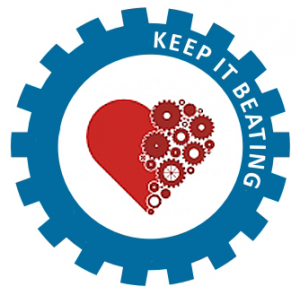
- 03 May 2011
Eindhoven- Netherland
For more details click here.
Computer-Aided Patient-Specific Coronary Artery Graft Design Improvements Using CFD Coupled Shape Optimizer
Onur Dur, Sinan Tolga Coskun, Kasim Oguz Coskun, David Frakes, Levent Burak Kara and Kerem Pekkan
This study aims to (i) demonstrate the efficacy of a new surgical planning framework for complex cardiovascular reconstructions, (ii) develop a computational fluid dynamics (CFD) coupled multi-dimensional shape optimization method to aid patient-specific coronary artery by-pass graft (CABG) design and, (iii) compare the hemodynamic efficiency of the sequential CABG, i.e., raising a daughter parallel branch from the parent CABG in patient-specific 3D settings. Hemodynamic efficiency of patient-specific complete revascularization scenarios for right coronary artery (RCA), left anterior descending artery (LAD), and left circumflex artery (LCX) bypasses were investigated in comparison to the stenosis condition. Multivariate 2D constraint optimization was applied on the left internal mammary artery (LIMA) graft, which was parameterized based on actual surgical settings extracted from 2D CT slices. The objective function was set to minimize the local variation of wall shear stress (WSS) and other hemodynamic indices (energy dissipation, flow deviation angle, average WSS, and vorticity) that correlate with performance of the graft and risk of re-stenosis at the anastomosis zone. Once the optimized 2D graft shape was obtained, it was translated to 3D using an in-house ?sketch-based? interactive anatomical editing tool. The final graft design was evaluated using an experimentally validated second-order non-Newtonian CFD solver incorporating resistance based outlet boundary conditions. 3D patient-specific simulations for the healthy coronary anatomy produced realistic coronary flows. All revascularization techniques restored coronary perfusions to the healthy baseline. Multi-scale evaluation of the optimized LIMA graft enabled significant wall shear stress gradient (WSSG) relief (~34%). In comparison to original LIMA graft, sequential graft also lowered the WSSG by 15% proximal to LAD and diagonal bifurcation. The proposed sketch-based surgical planning paradigm evaluated the selected coronary bypass surgery procedures based on acute hemodynamic readjustments of aorta-CA flow. This methodology may provide a rational to aid surgical decision making in time-critical, patient-specific CA bypass operations before in vivo execution.
For more details, click here.
Inverse Problems in Science and Engineering
A meshless CFD approach for evolutionary shape optimization of bypass grafts anastomoses
Abstract
Improving the blood flow or hemodynamics in the synthetic bypass graft end-to-side distal anastomosis (ETSDA) is an important element for the long-term success of bypass surgeries. An ETSDA is the interconnection between the graft and the operated-on artery. The control of hemodynamic conditions through the ETSDA is mostly dictated by the shape of the ETSDA. Thus, a formal ETSDA shape optimization would serve the goal of improving the ETSDA flowfield. Computational fluid dynamics (CFD) is a convenient tool to quantify hemodynamic parameters; also, the genetic algorithm (GA) is an effective tool to identify the ETSDA optimal shape that modify those hemodynamic quantities such that the optimization objective is met. The present article introduces a unique approach where a meshless CFD solver is coupled to a GA for the purpose of optimizing the ETSDA shape. Three anastomotic models are optimized herein: the conventional ETSDA, the Miller cuff ETSDA and the hood ETSDA. Results demonstrate the effectiveness of the proposed integrated optimization approach in obtaining anastomoses optimal shapes.
For more details click here.
Z. El Zahaba; E. Divob; A. Kassaba
Department of Mechanical, Materials and Aerospace Engineering, University of Central Florida, Orlando, FL, USA
Department of Engineering Technology, University of Central Florida, Orlando, FL, USA
Workshop: Advances in Immunology and Cancer Biology
Advances in Immunology and Cancer Biology
15-17 April 2011
Boğaziçi University, Demir Demirgil Hall / Özger Arnas Hall
Registration for the workshop is now open !!!
Take me to the REGISTRATION page.
Seminars 13th April_2
The Ethics of Science and Engineering
ITU Electirics and Electronics Faculty 13 April 2011
First
The posts will be about current news and researches about cardiovascular mechanics and biofluid dynamics in Turkey.
FLUENT – ICEM Courses
Thanks to Mustafa Emre Bayraktar three days-course.
Seminars 24th January
Biomedical Engineering Seminars’ speaker was Kamuran KADIPAŞAOĞLU and this has been the most incentive part of these meetings.
Image Source: Bahcesehir University
Seminars 4th November
Prof. Nelson Y.S. Kiang
The Speech and Hearing Bioscience and Technology PhD program in the Harvard-MIT Division of Health Sciences and Technology is an interdisciplinary training program designed to produce the next generation of pioneers in basic and clinical speech and hearing research. The program was established in 1992 by Nelson Kiang, and is currently co-directed by Drs. Louis Braida and Bertrand Delgutte.
As of 2006, the program has graduated about 60 PhD students in nearly all areas of speech and hearing research: auditory mechanics, peripheral and central auditory neuroscience, auditory psychophysics, hearing aids/cochlear implants, speech perception and production, machine processing of speech, language processing, voice disorders/laryngeal physiology, and vestibular physiology.
There are about 50 faculty members in the SHBT program, most of which hold appointments at MIT or Harvard Medical School. The main laboratories are at MIT, Harvard, the Massachusetts Eye and Ear Infirmary, Massachusetts General Hospital, Brigham and Women’s Hospital, Children’s Hospital, Boston University, and Northeastern University.
Knee Anatomy Segmentation
I tried to show the knee anatomy with the MRI dataset of 3D Slicer (Harvard Medical School /Brigham and Women’s Hospital / Surgical Planning Laboratory).
Video: Knee Anatomy
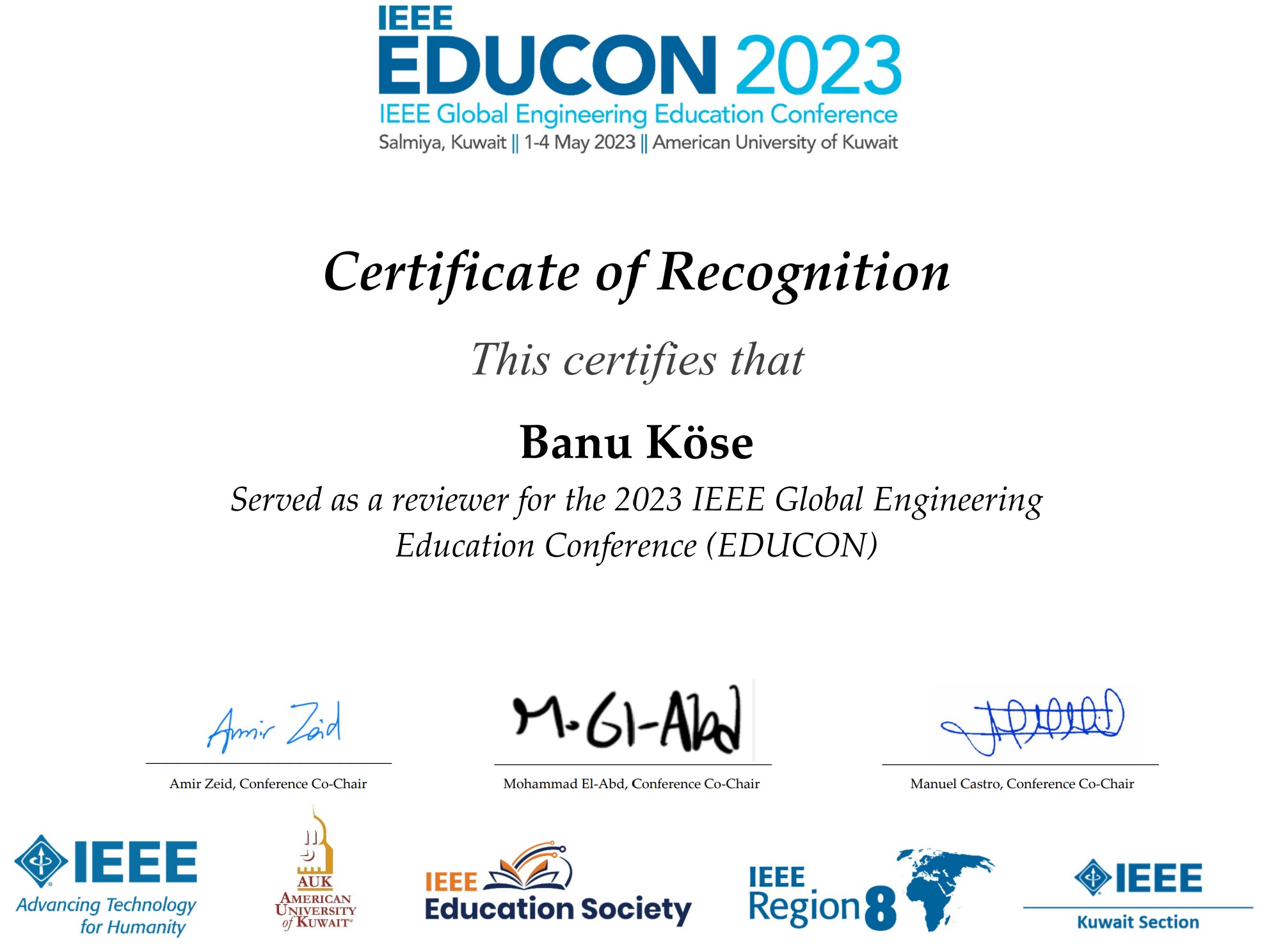
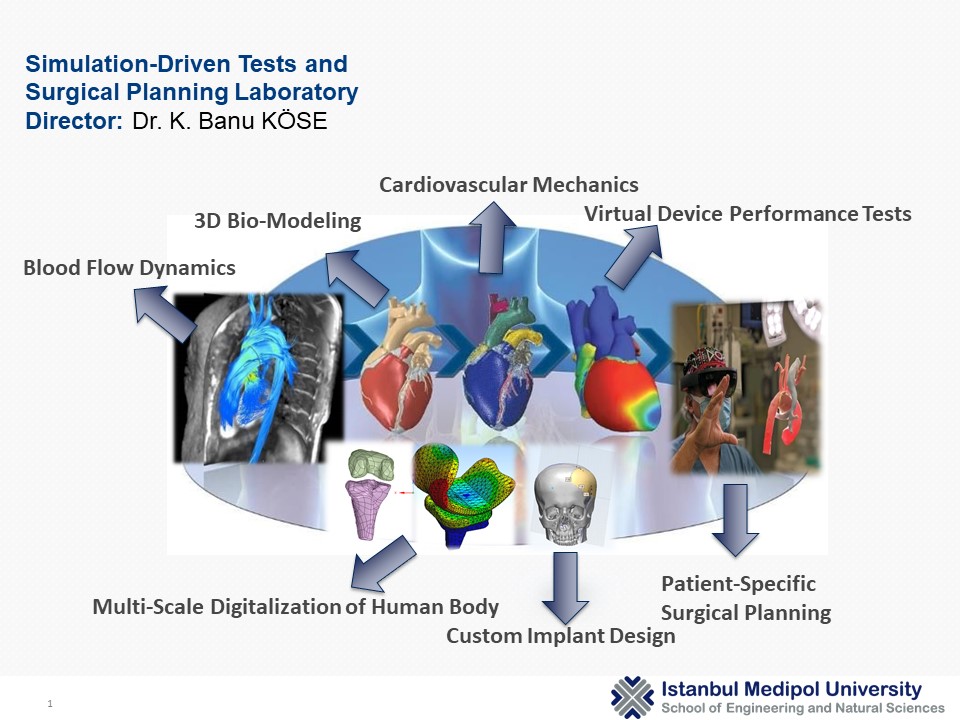
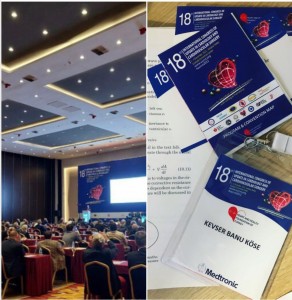
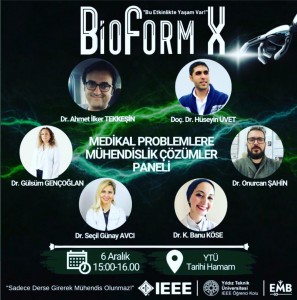
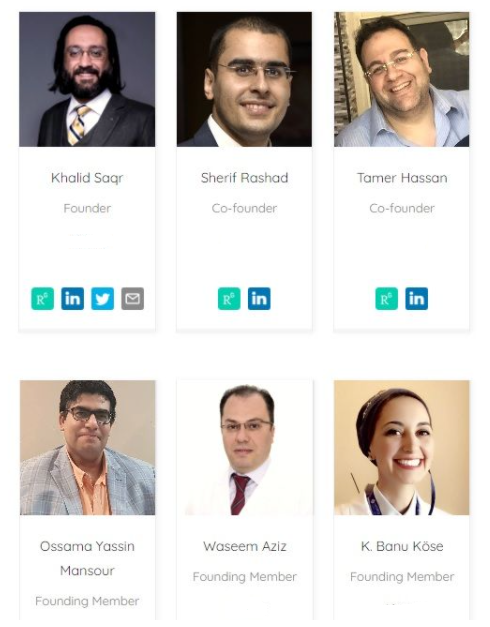
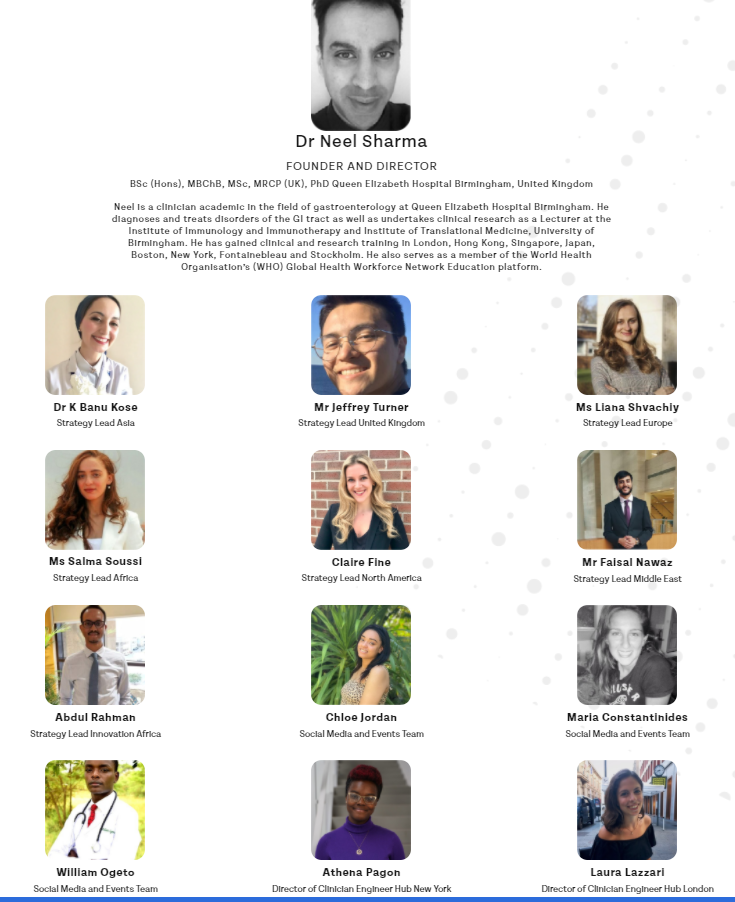
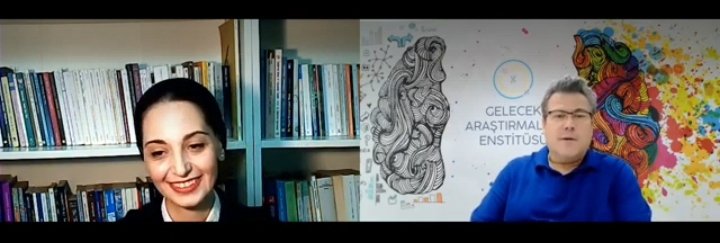
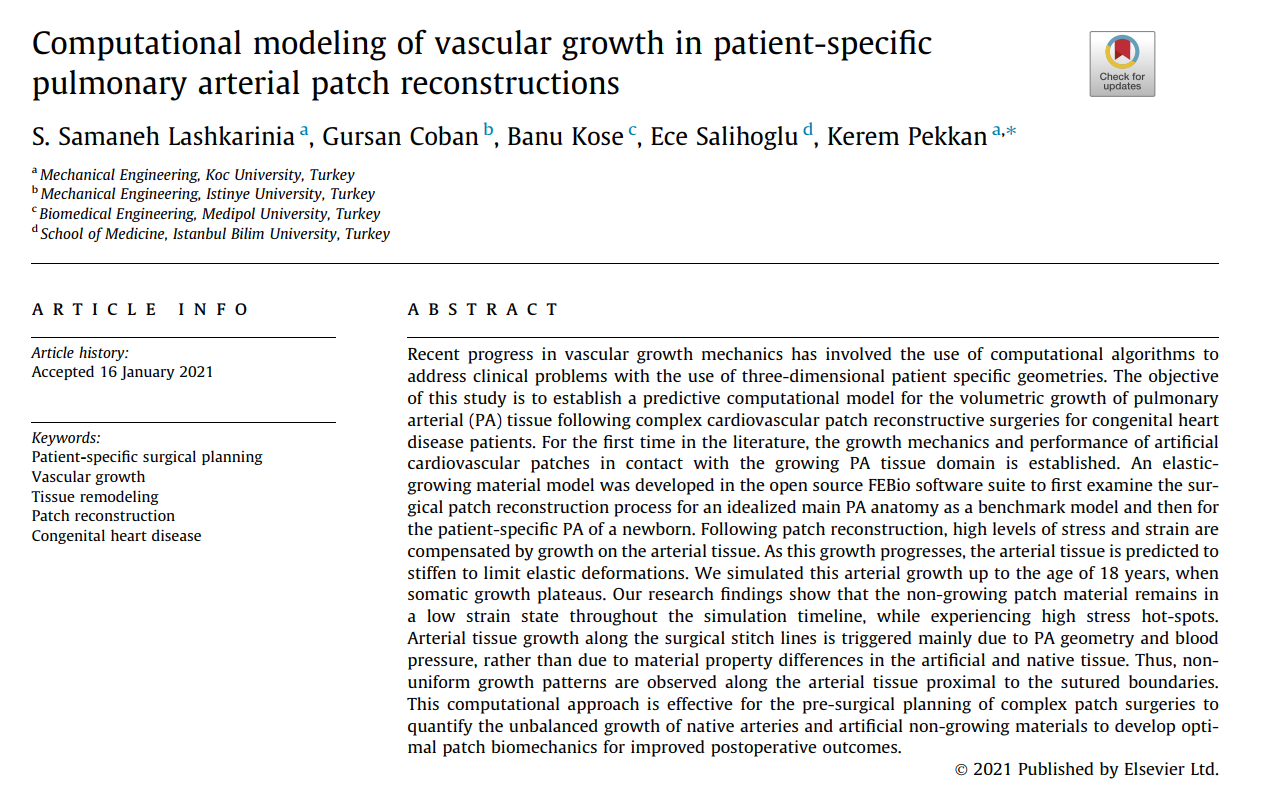
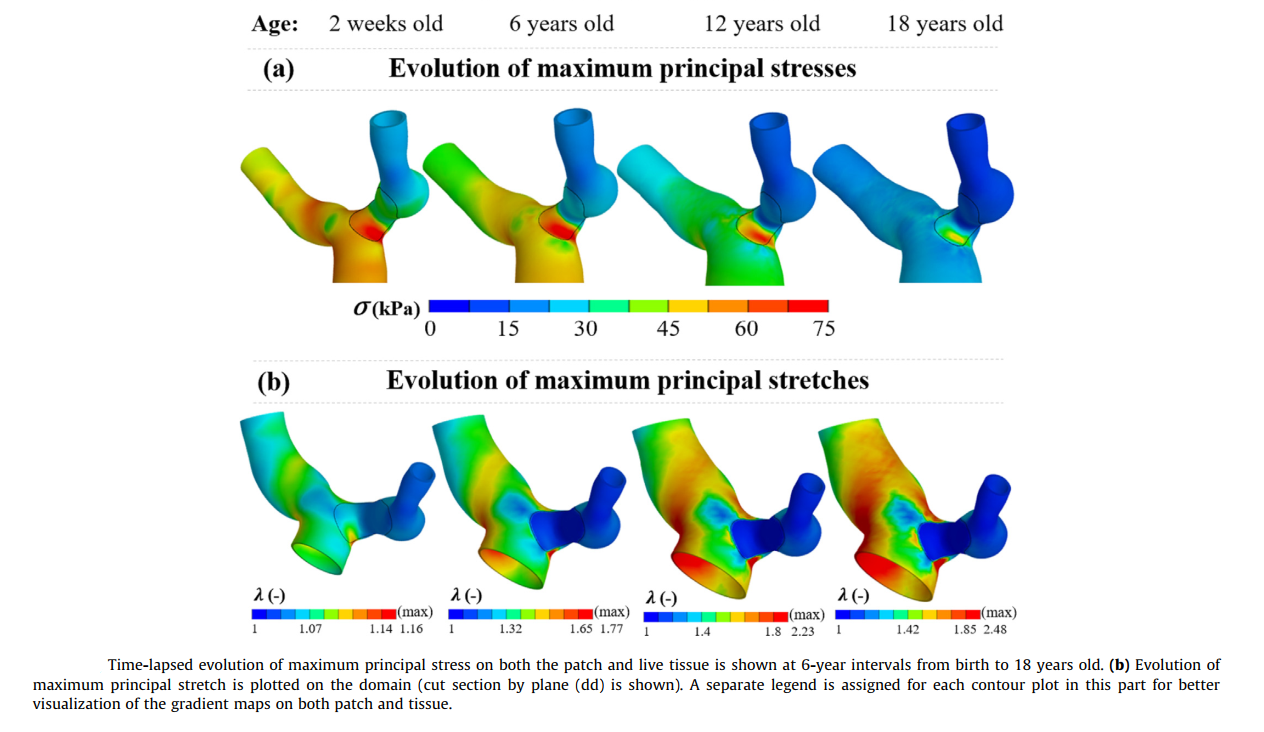
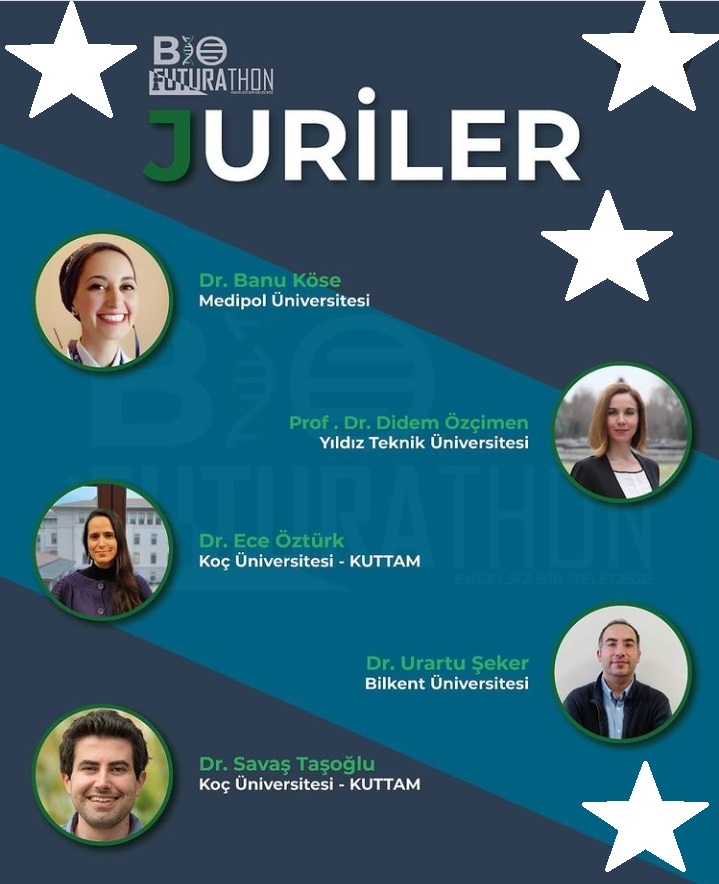

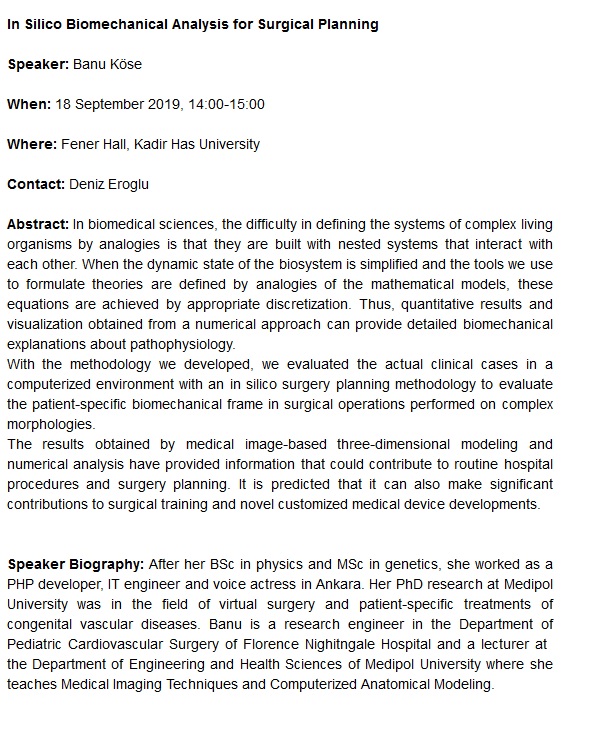


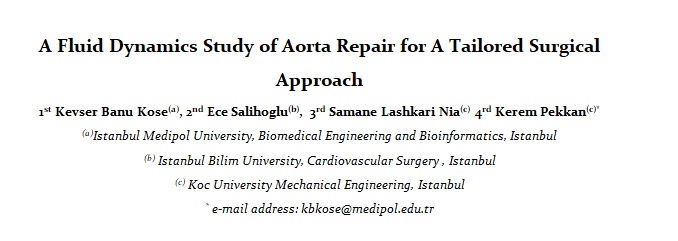
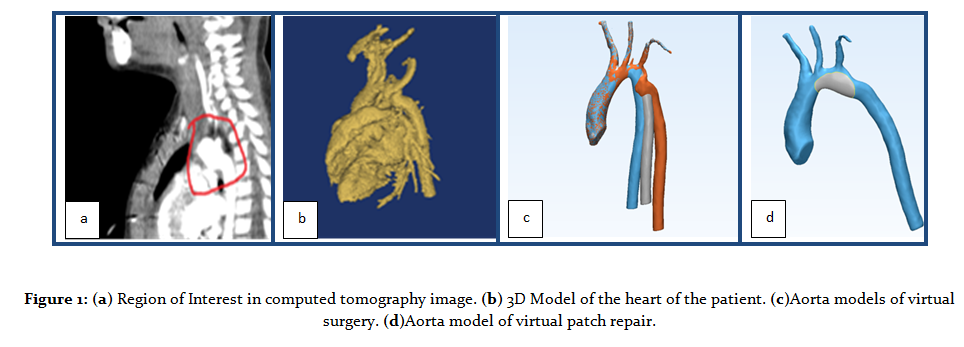

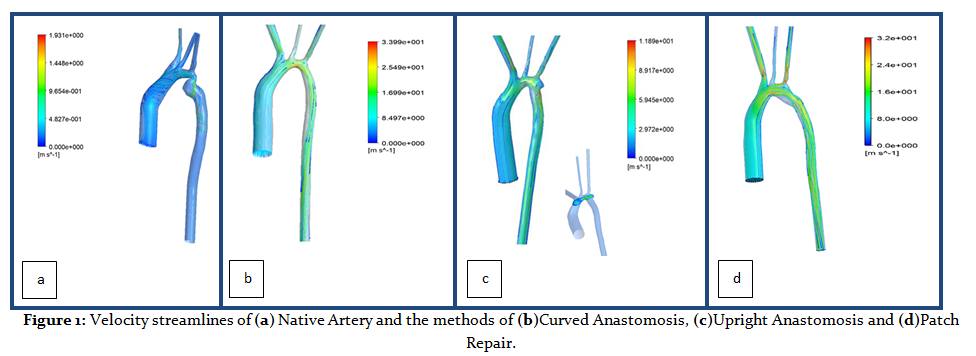
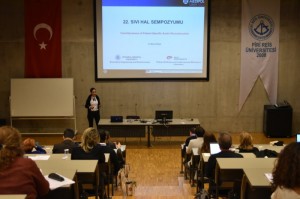
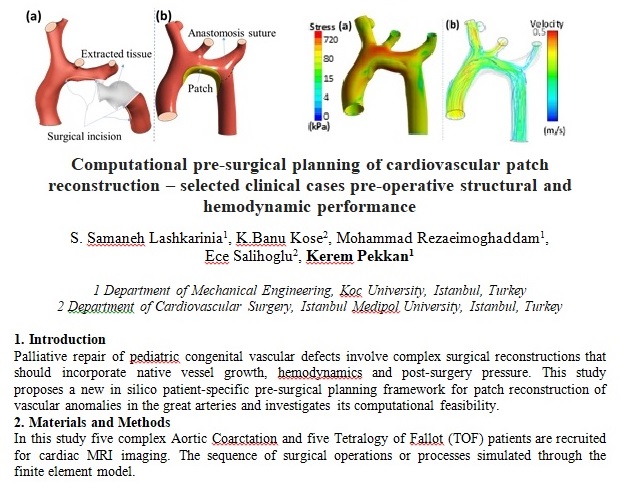
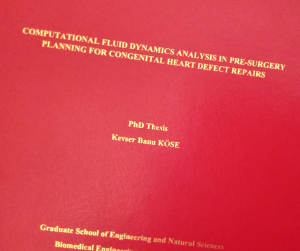
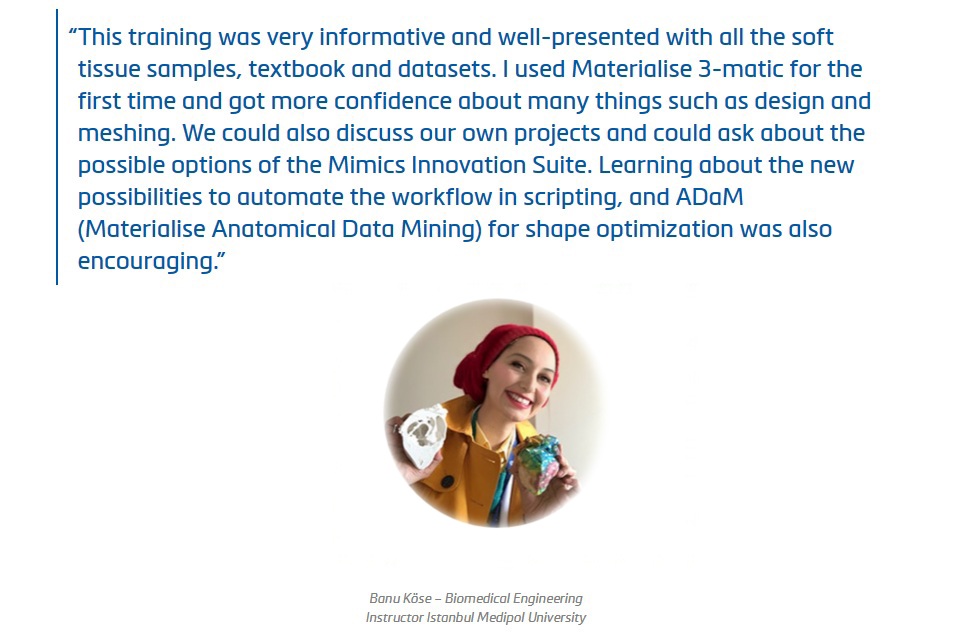
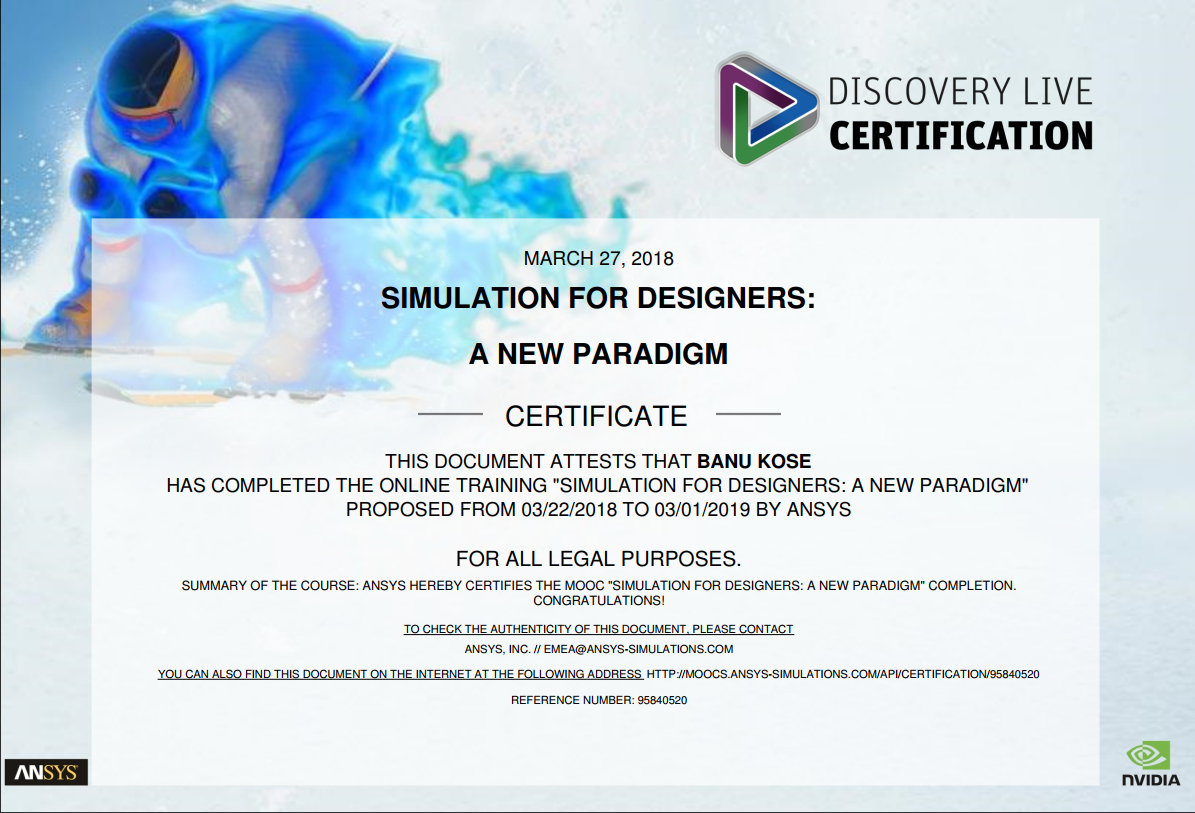

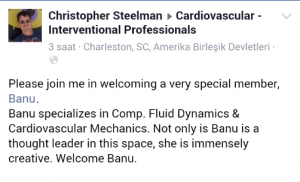

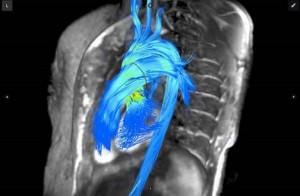

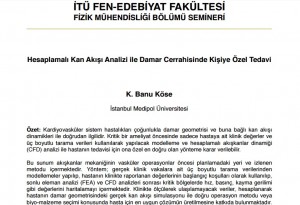
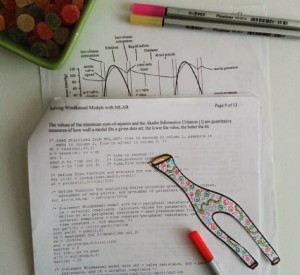

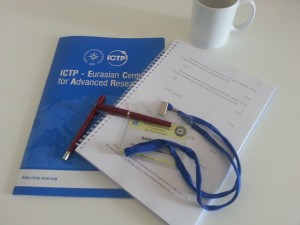
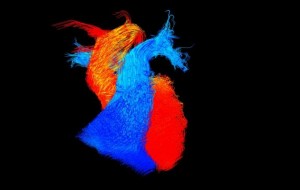


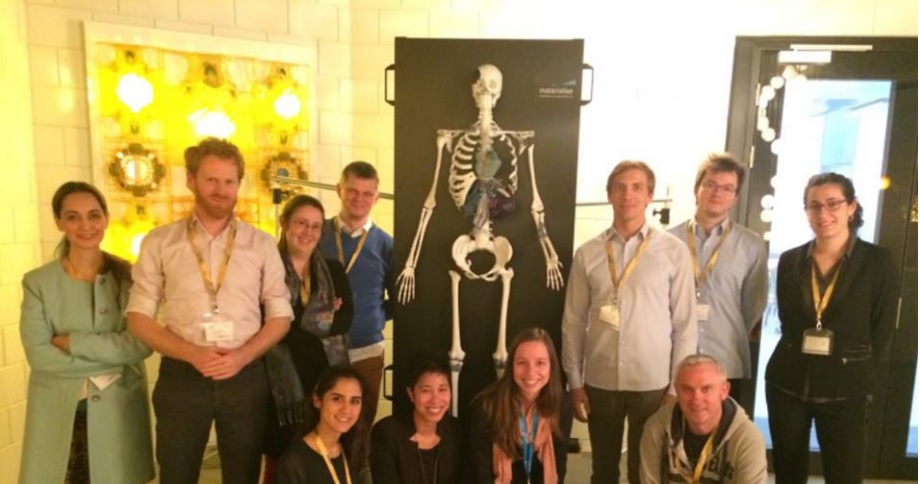

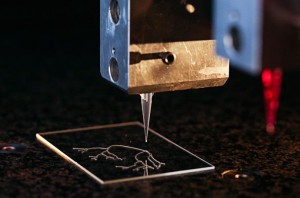
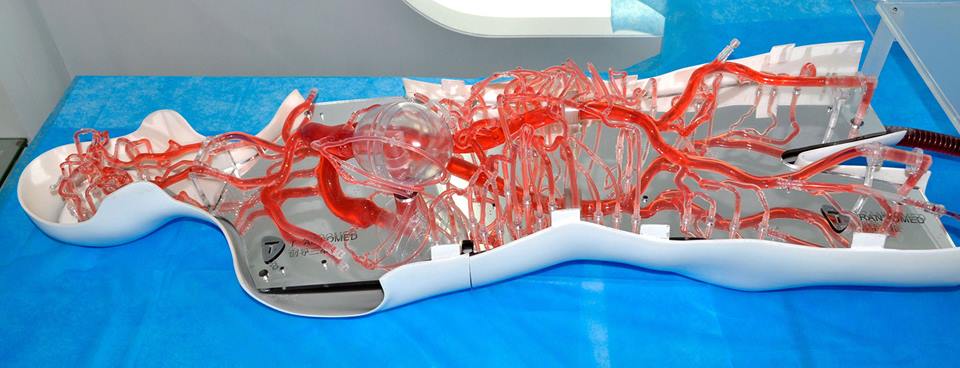
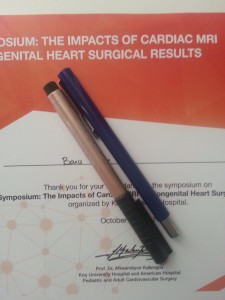
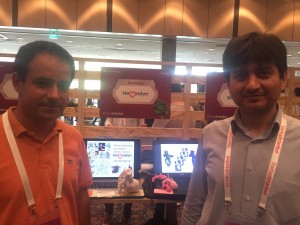
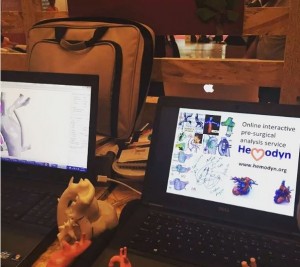
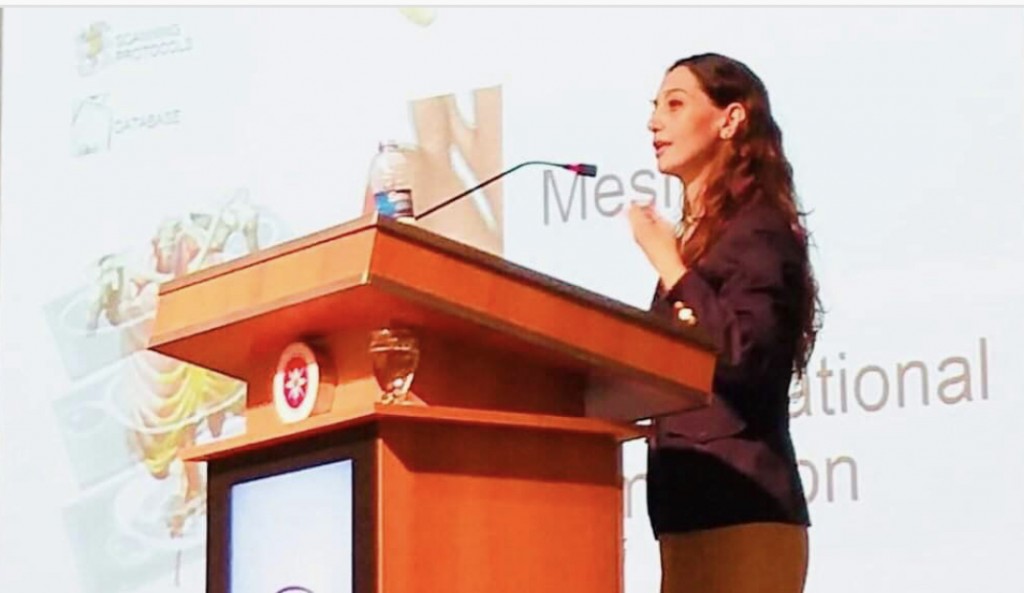
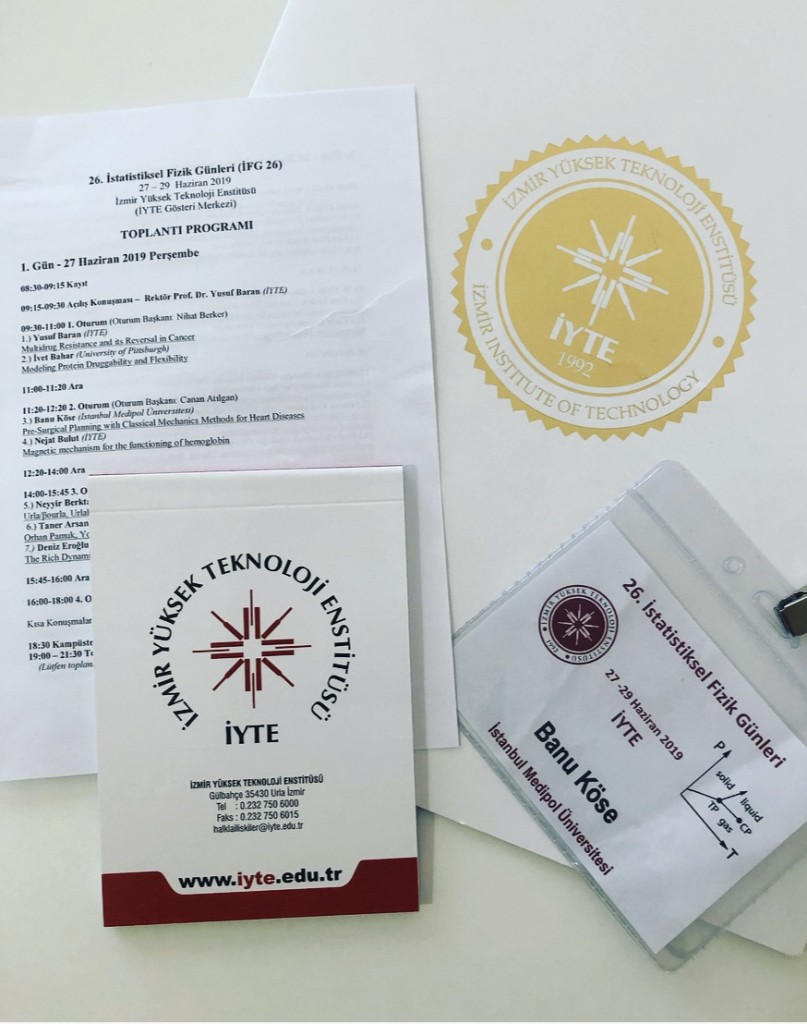
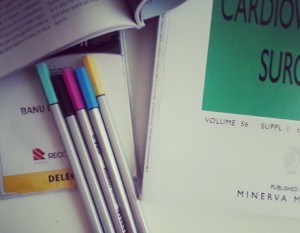
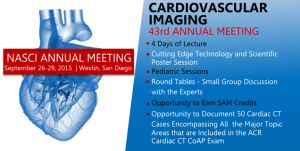
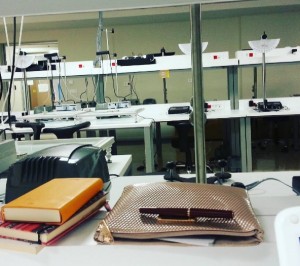
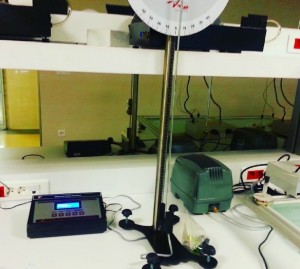
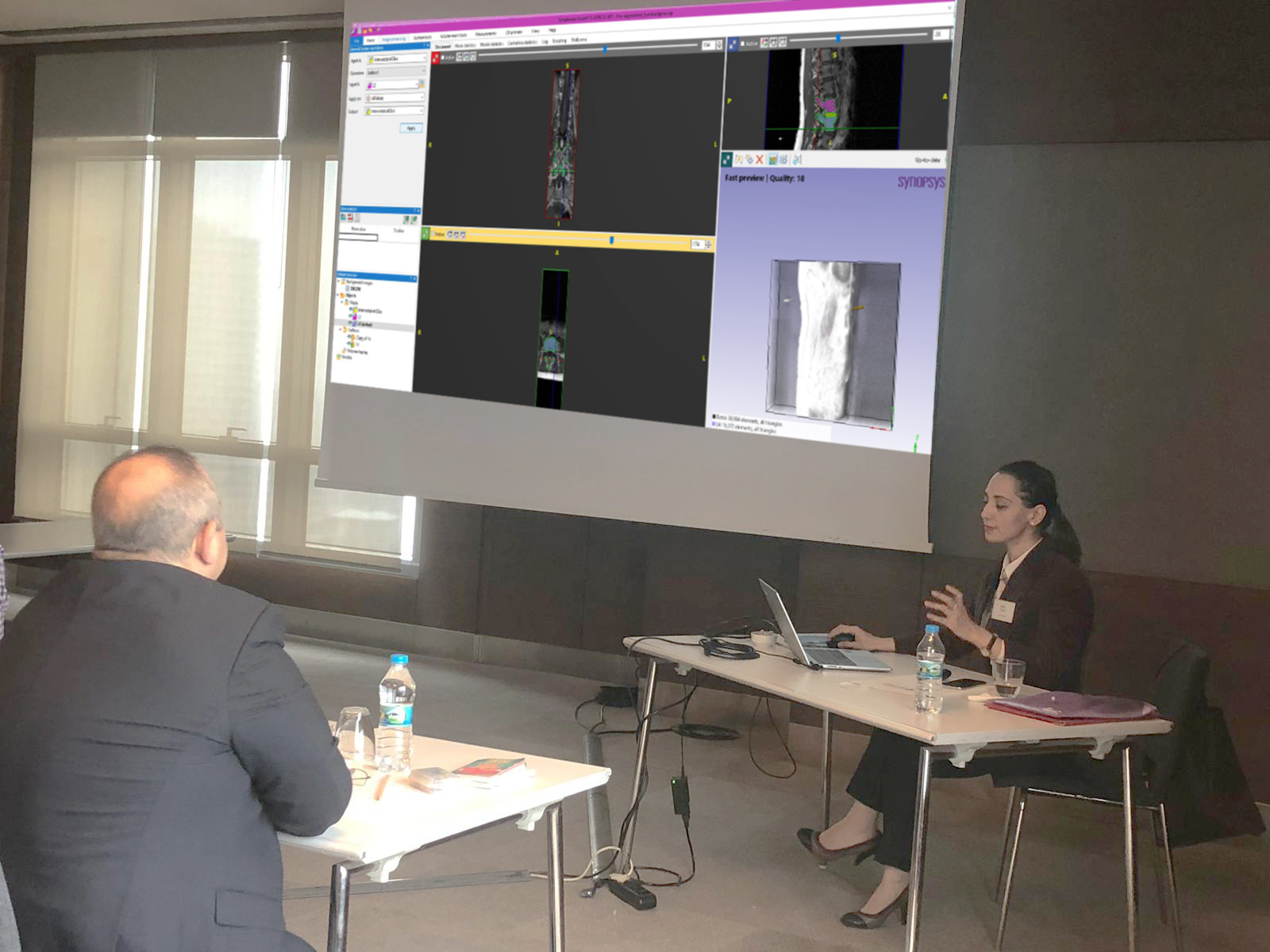
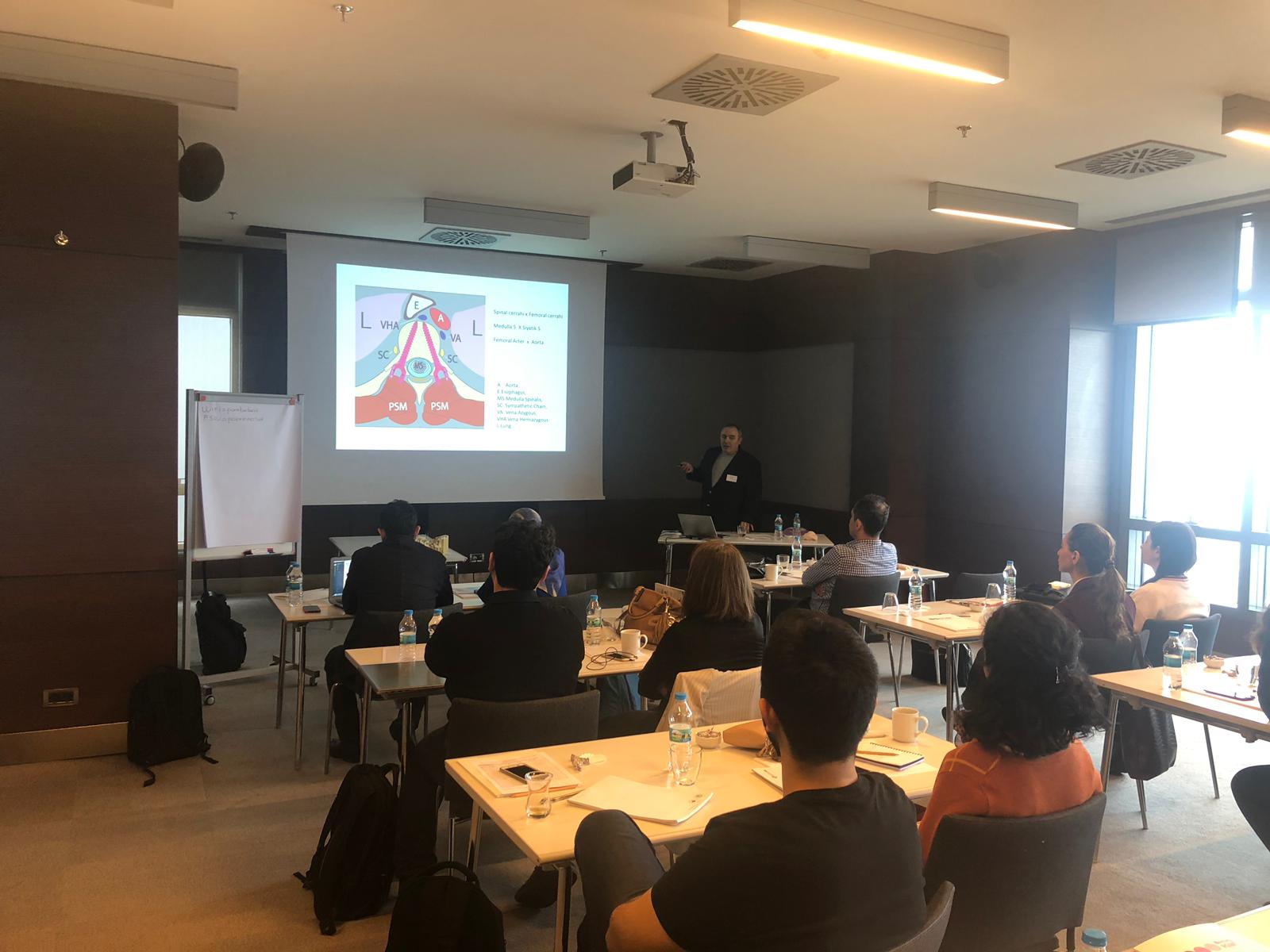
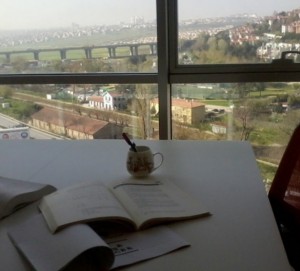
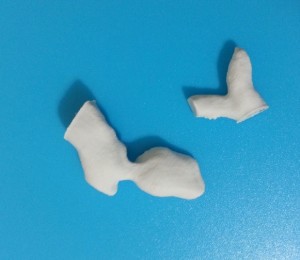
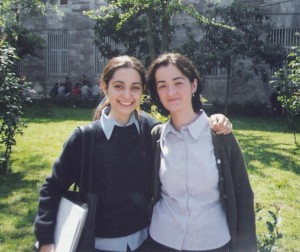
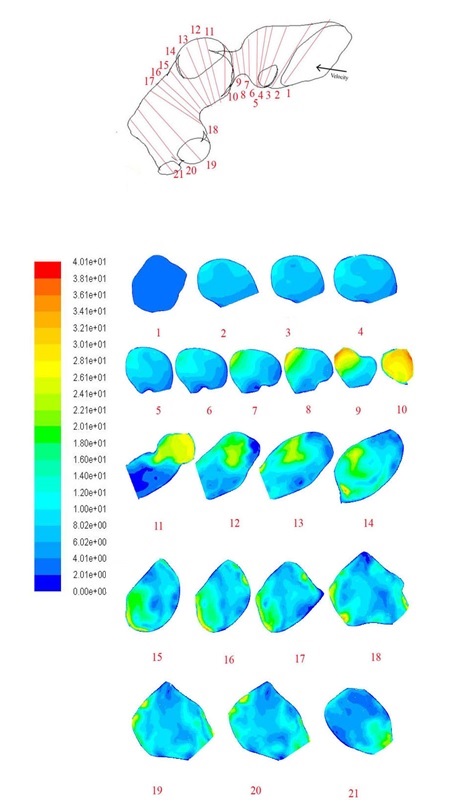
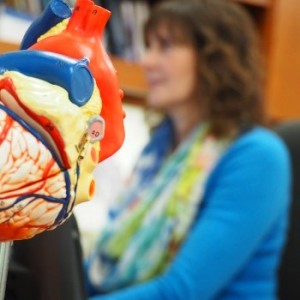
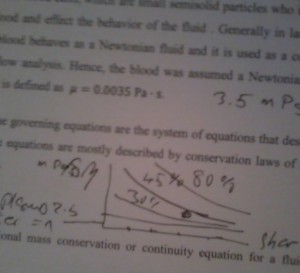
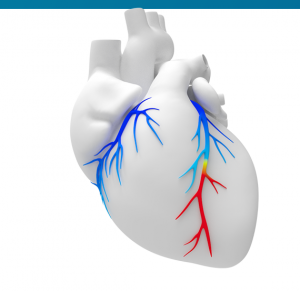
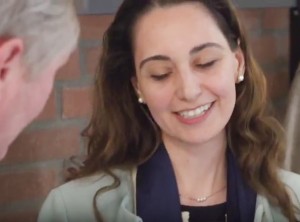
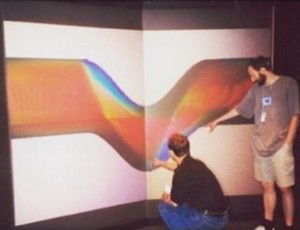


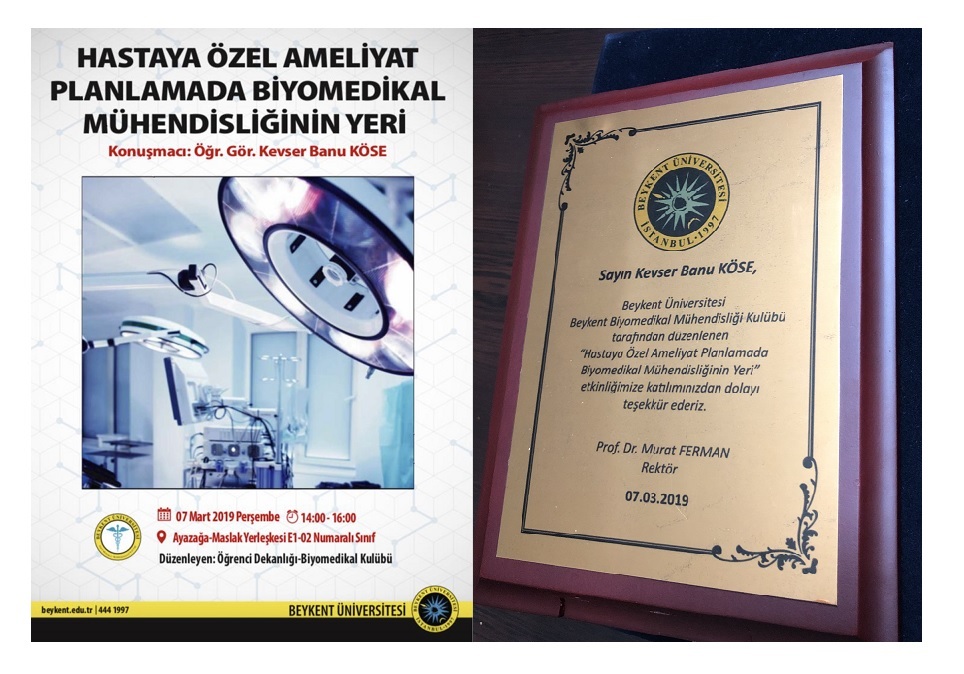
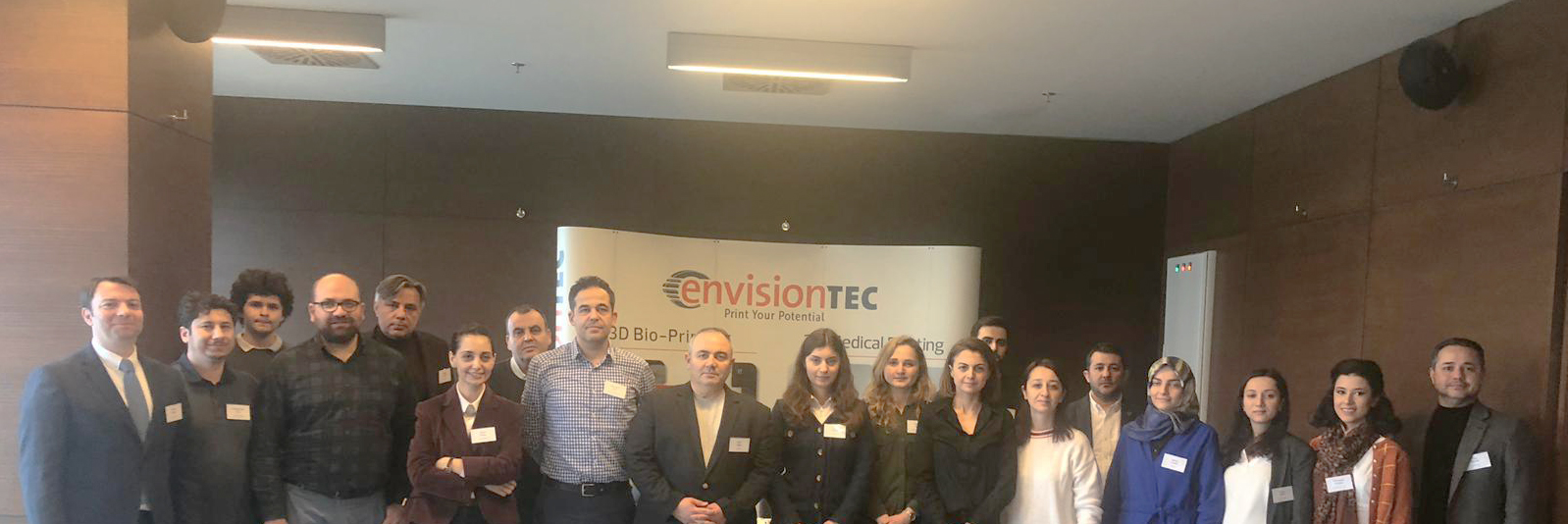
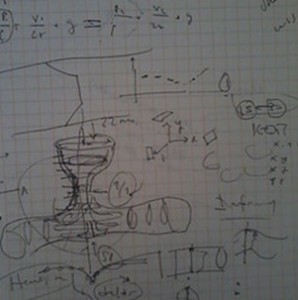
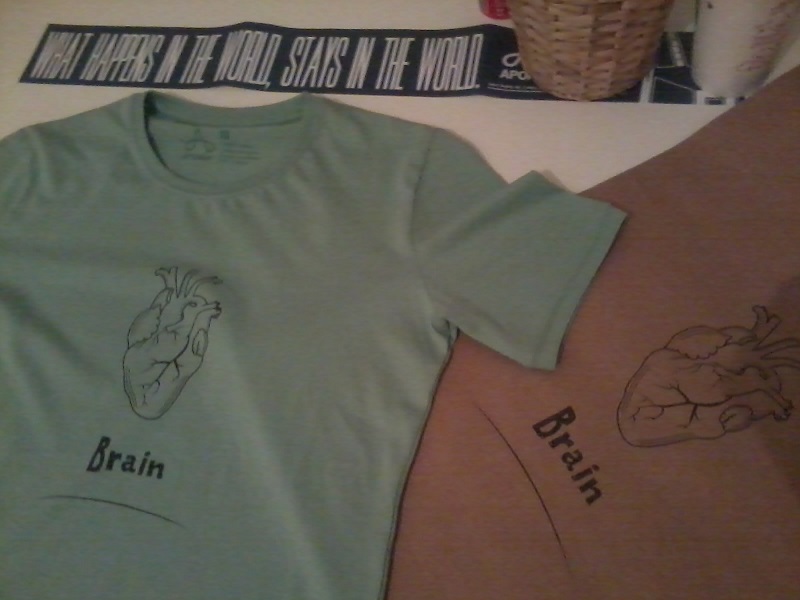
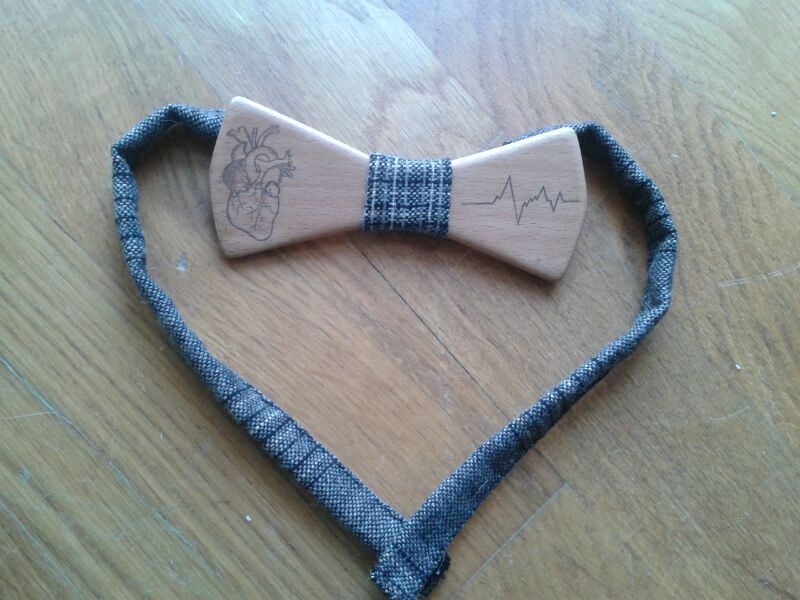

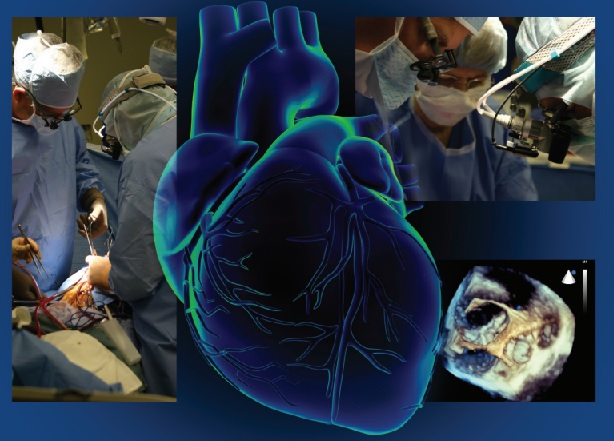

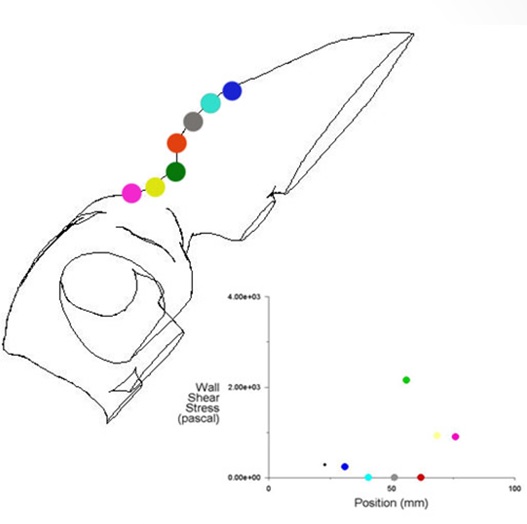
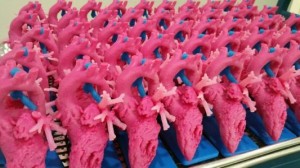
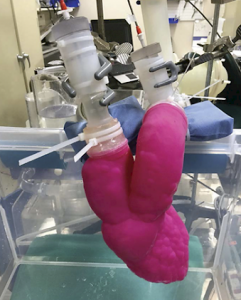
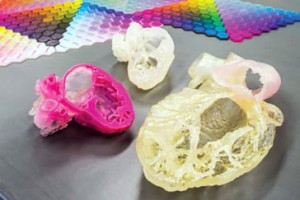
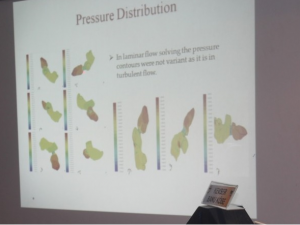
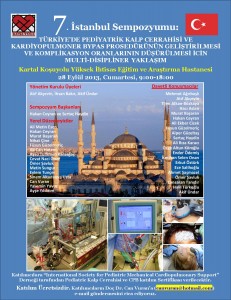


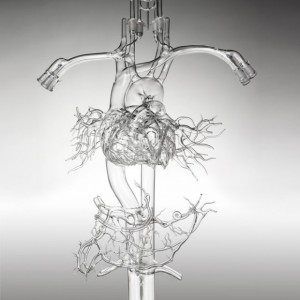
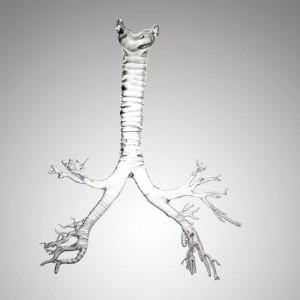
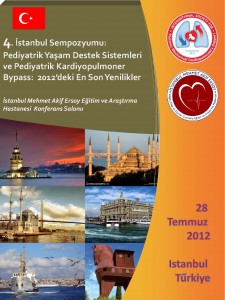

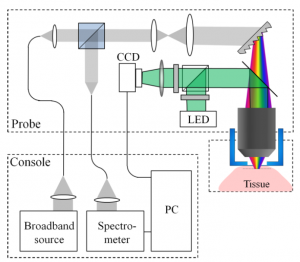
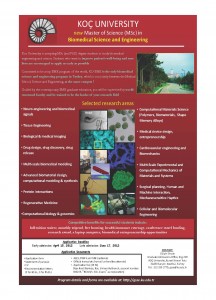 http://gsse.ku.edu.tr
http://gsse.ku.edu.tr
